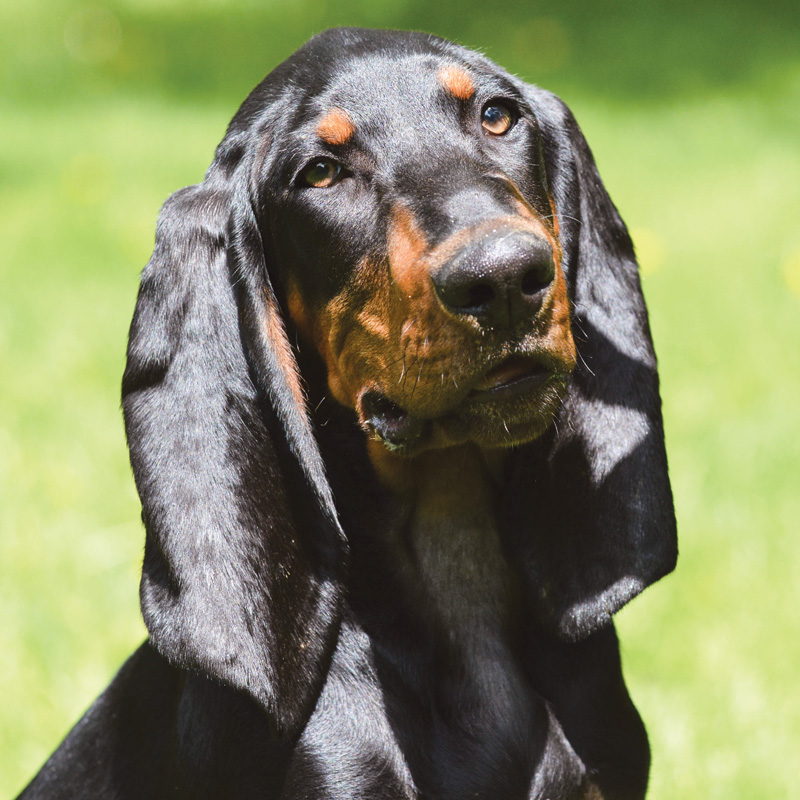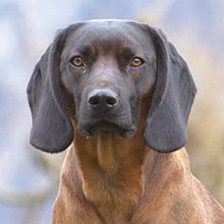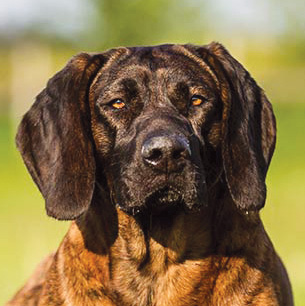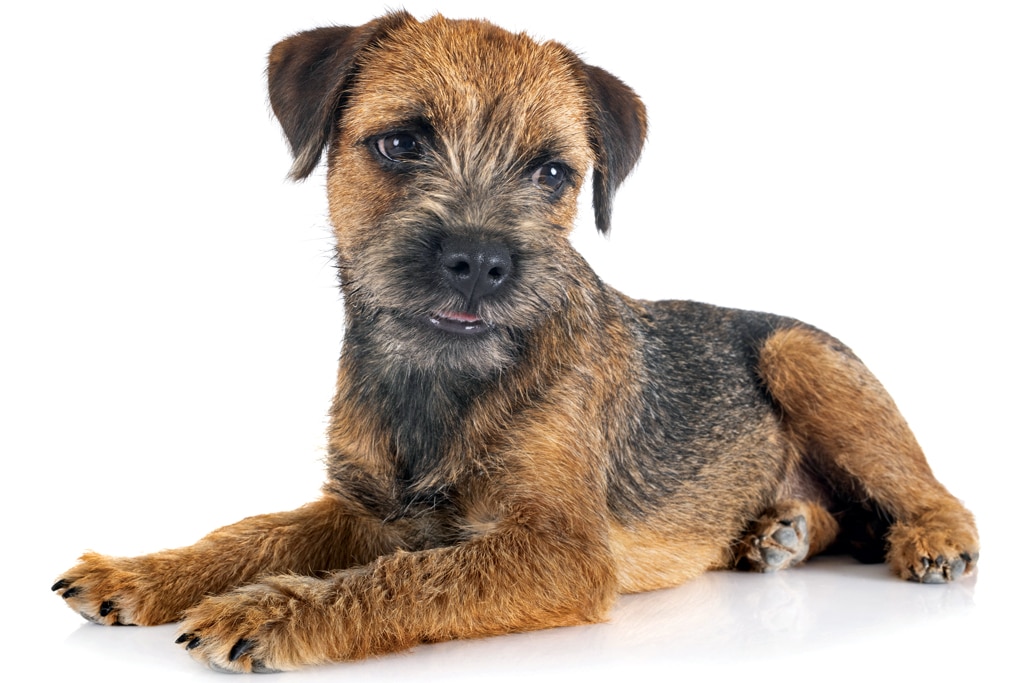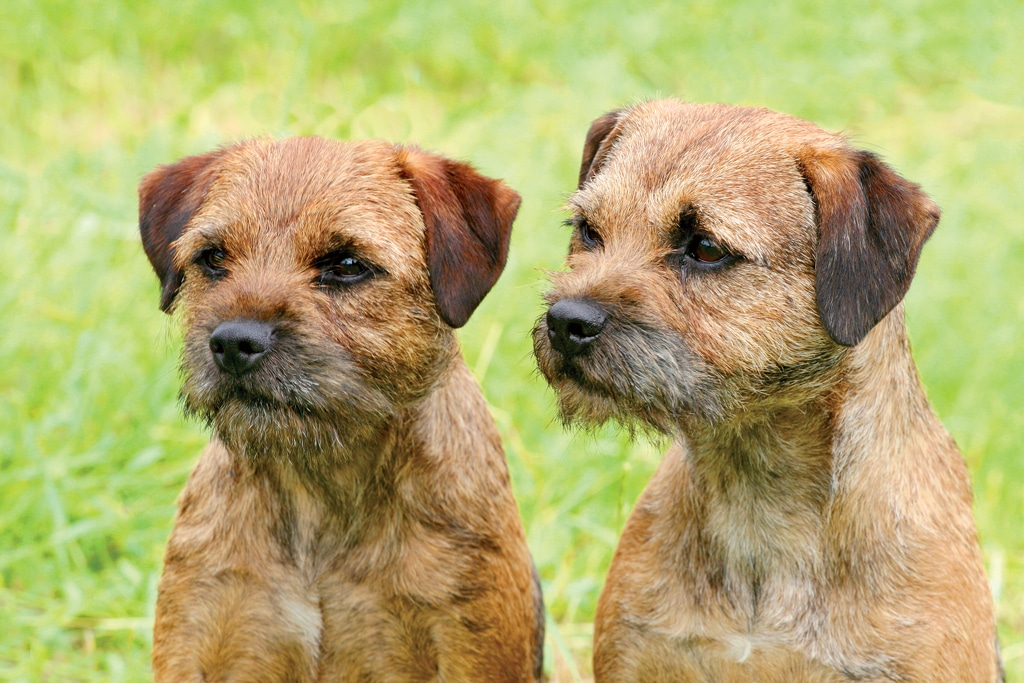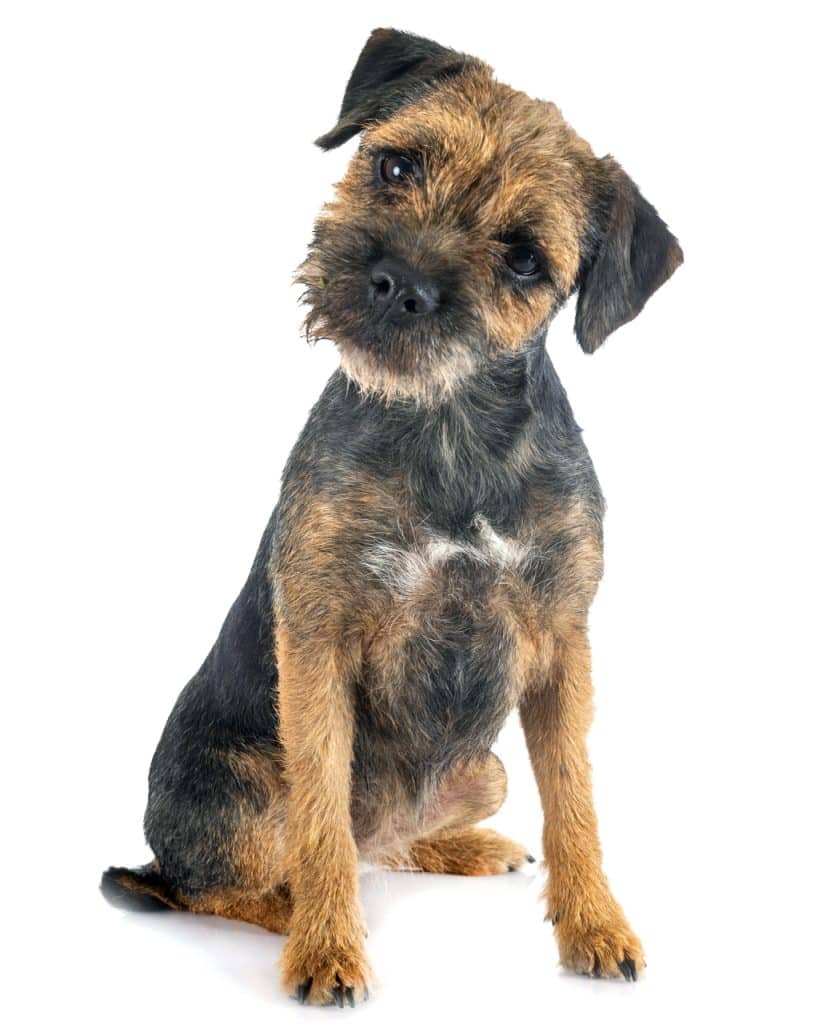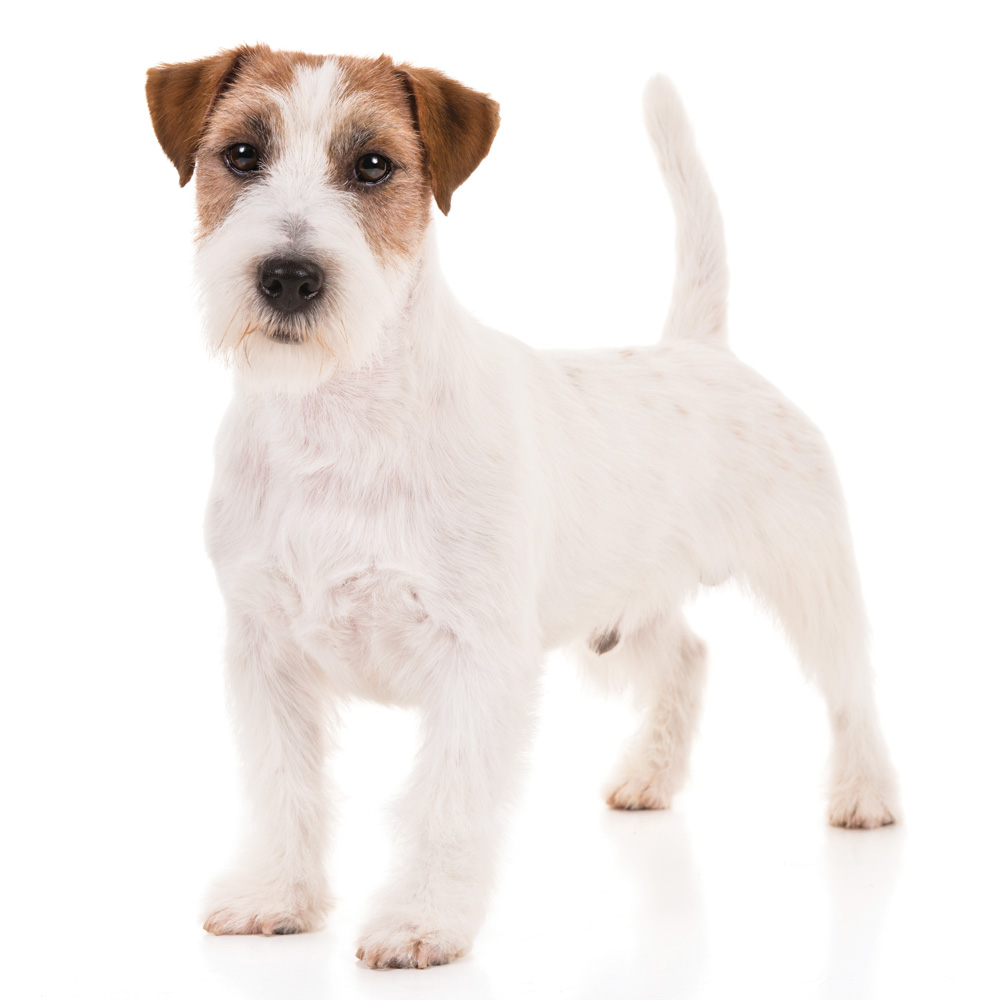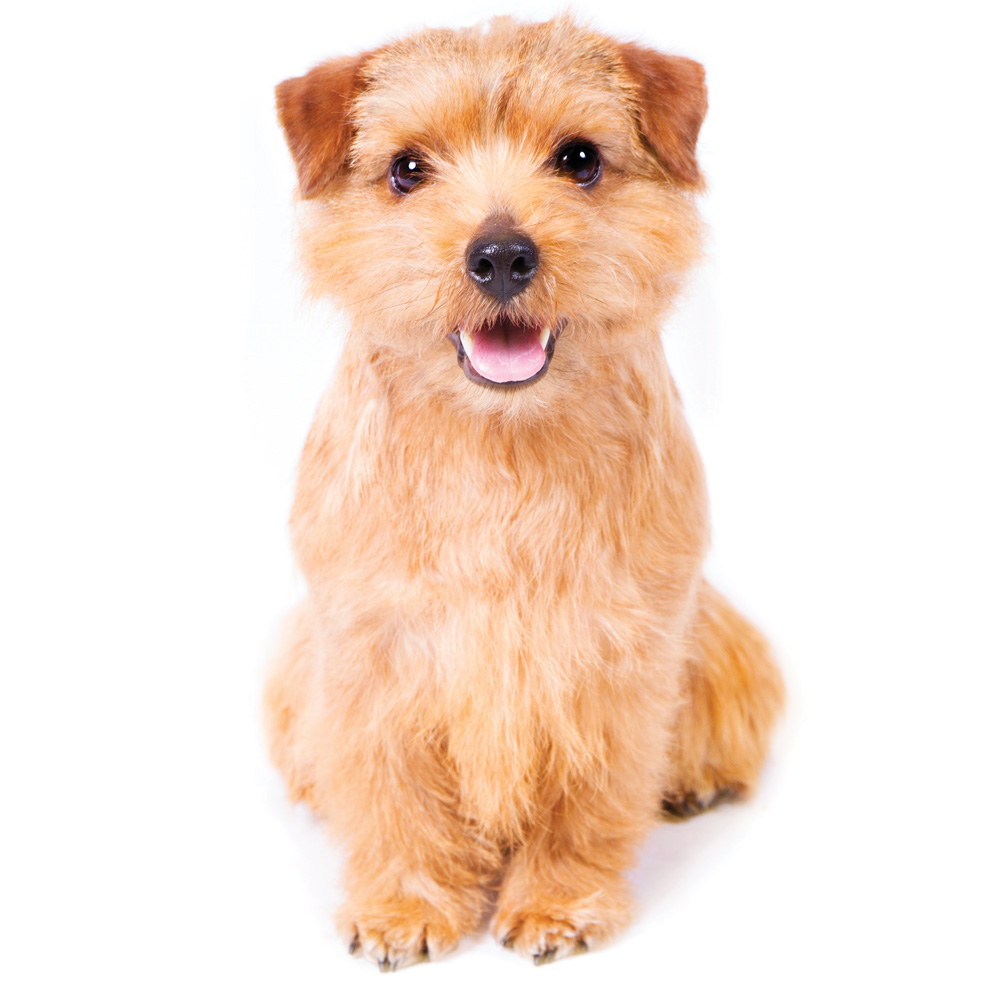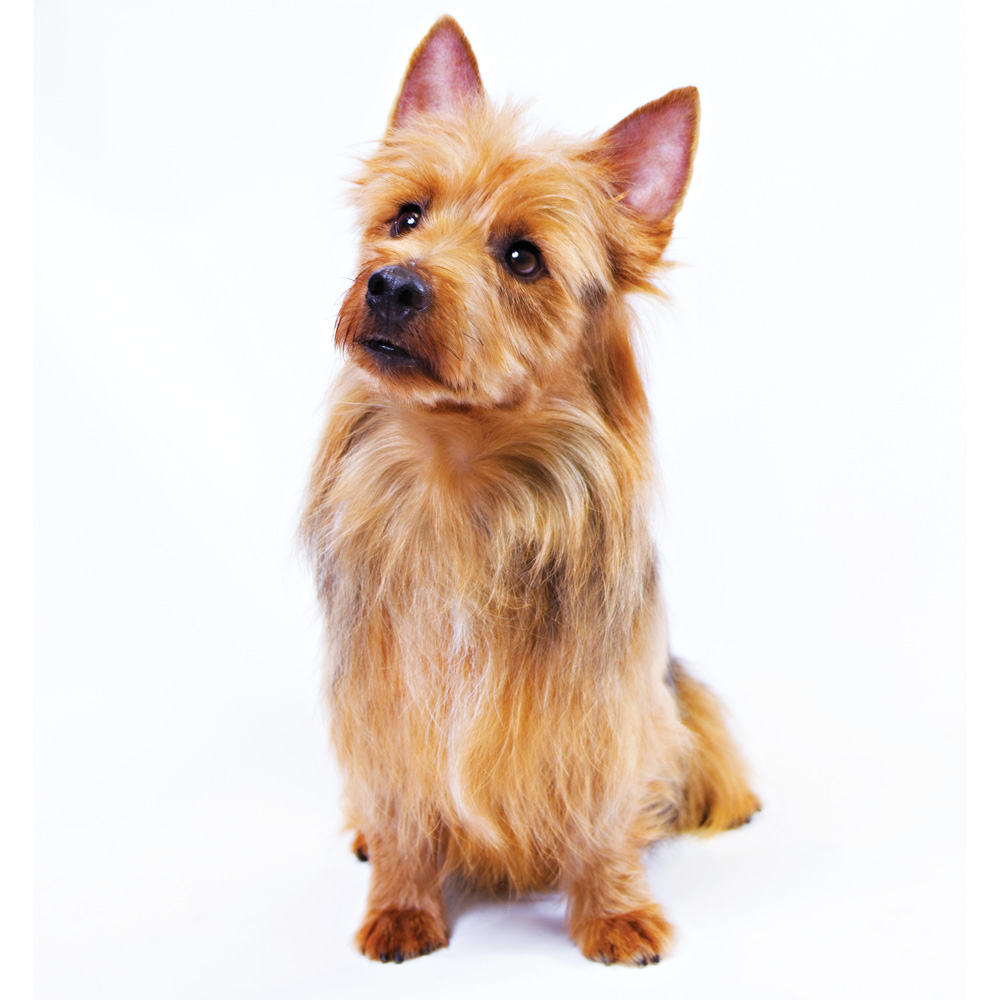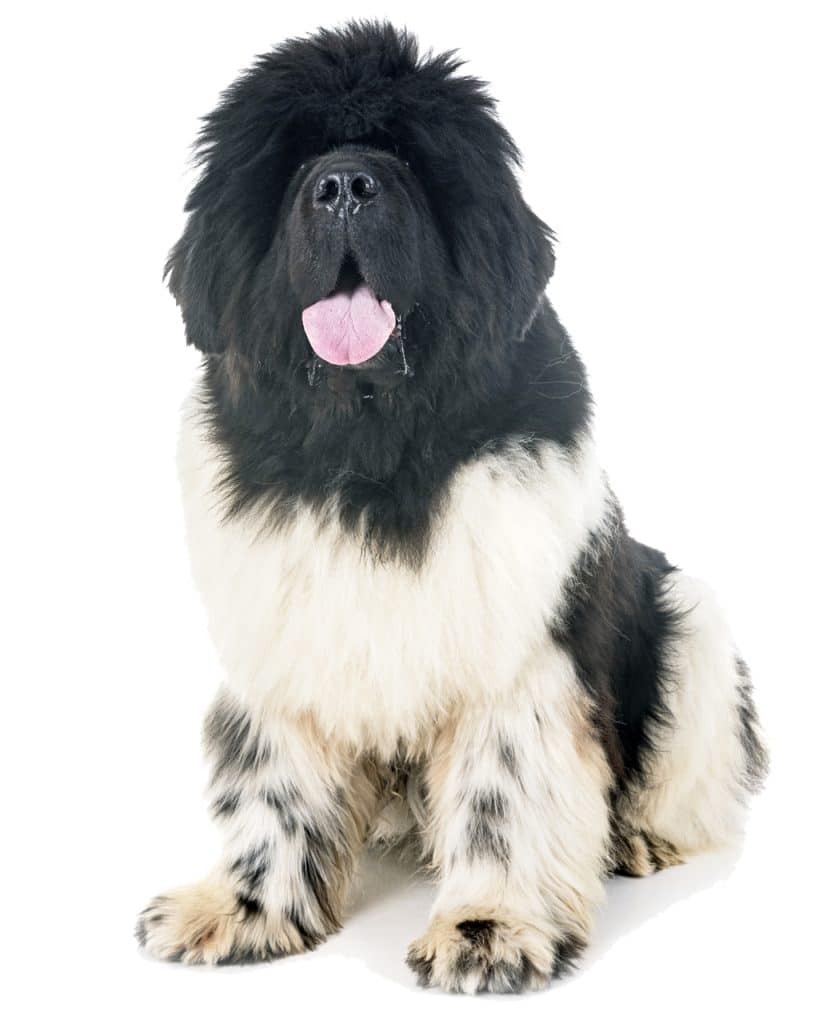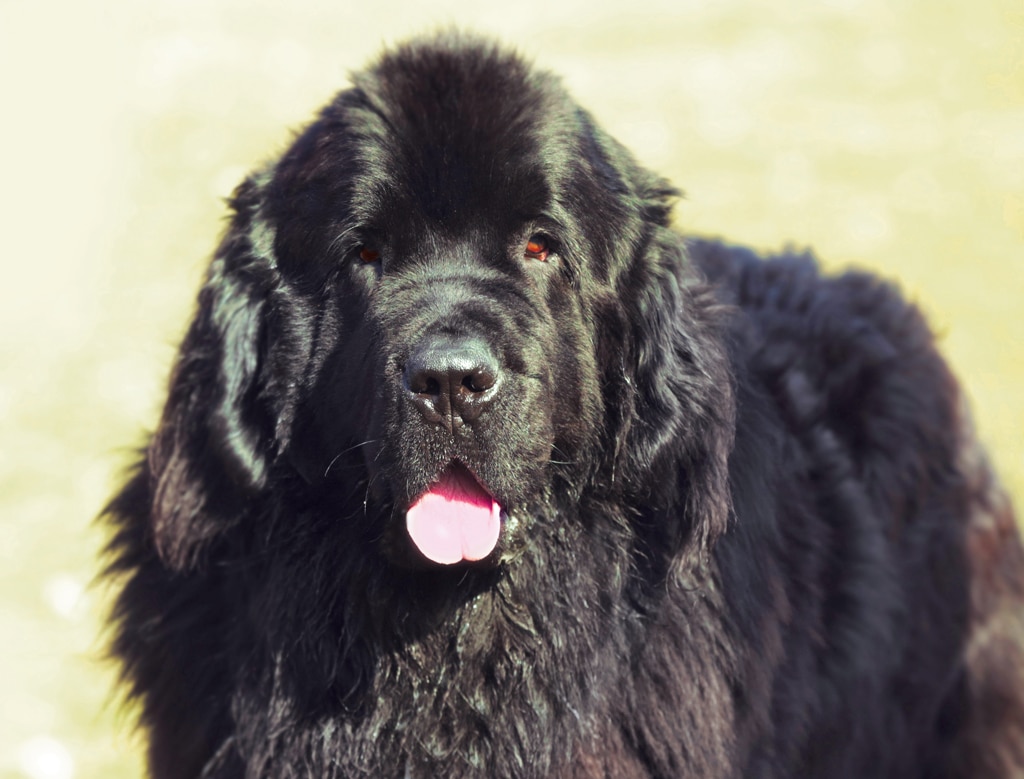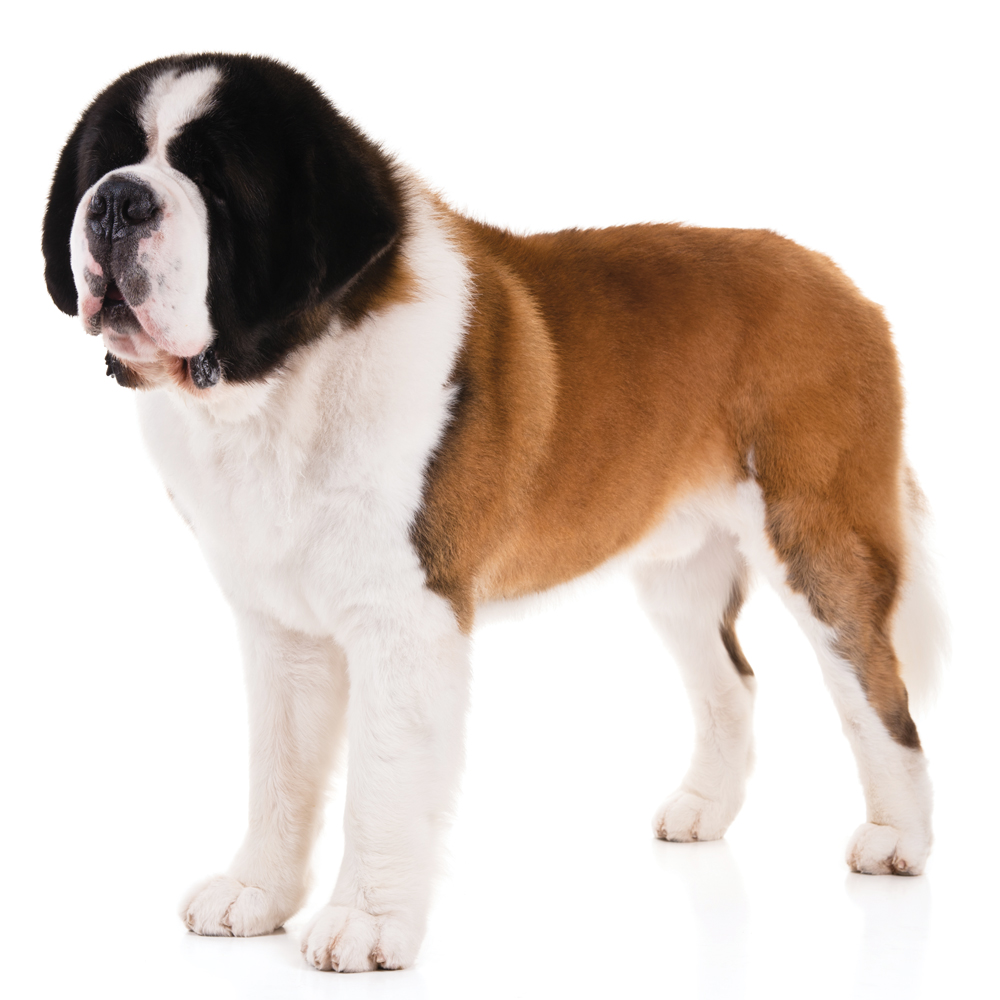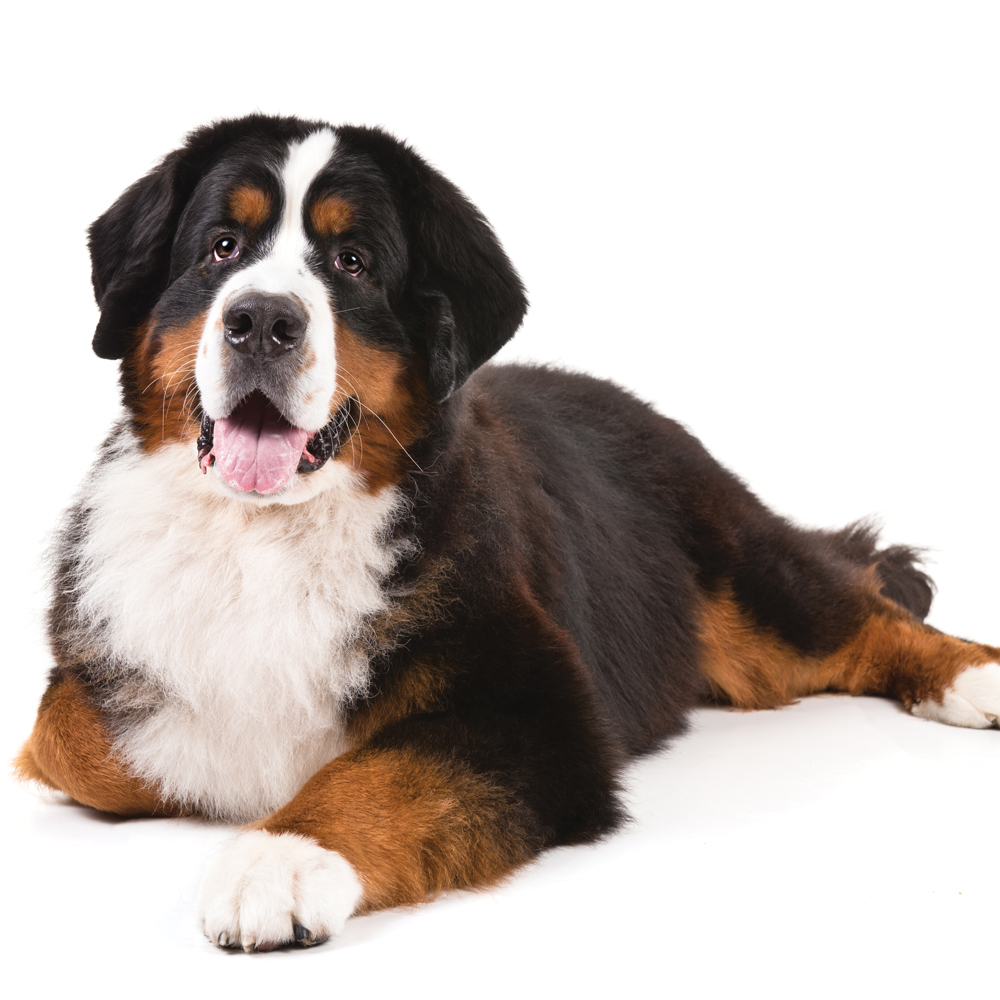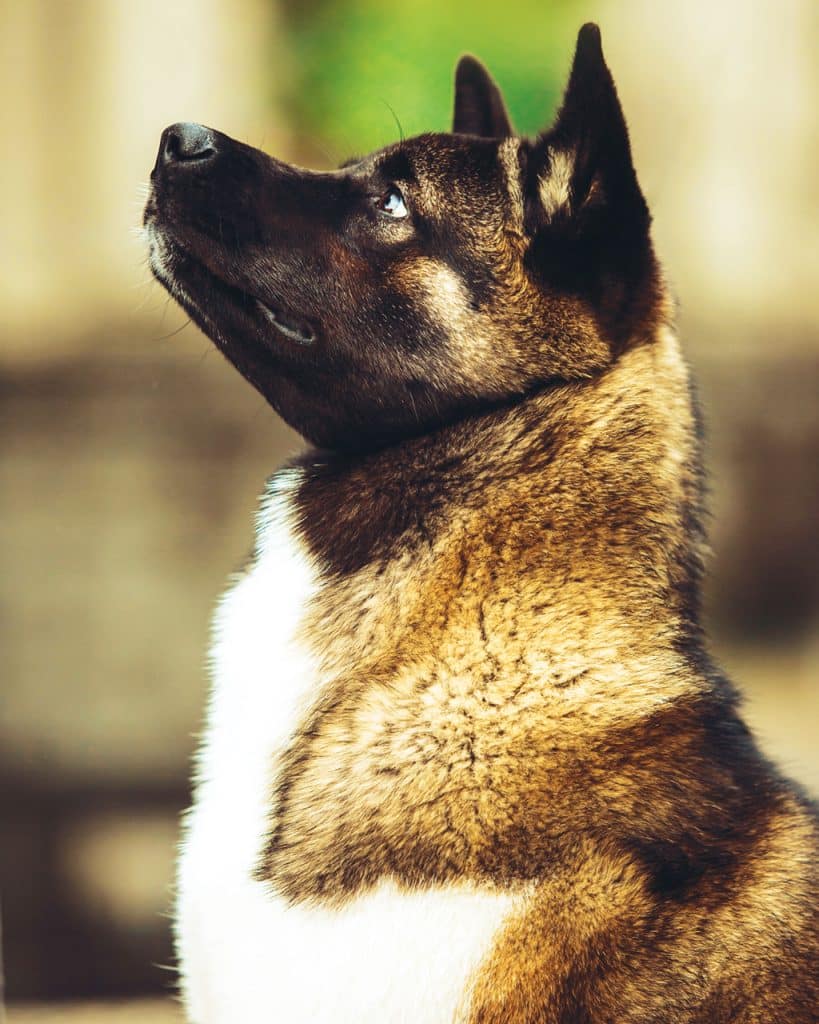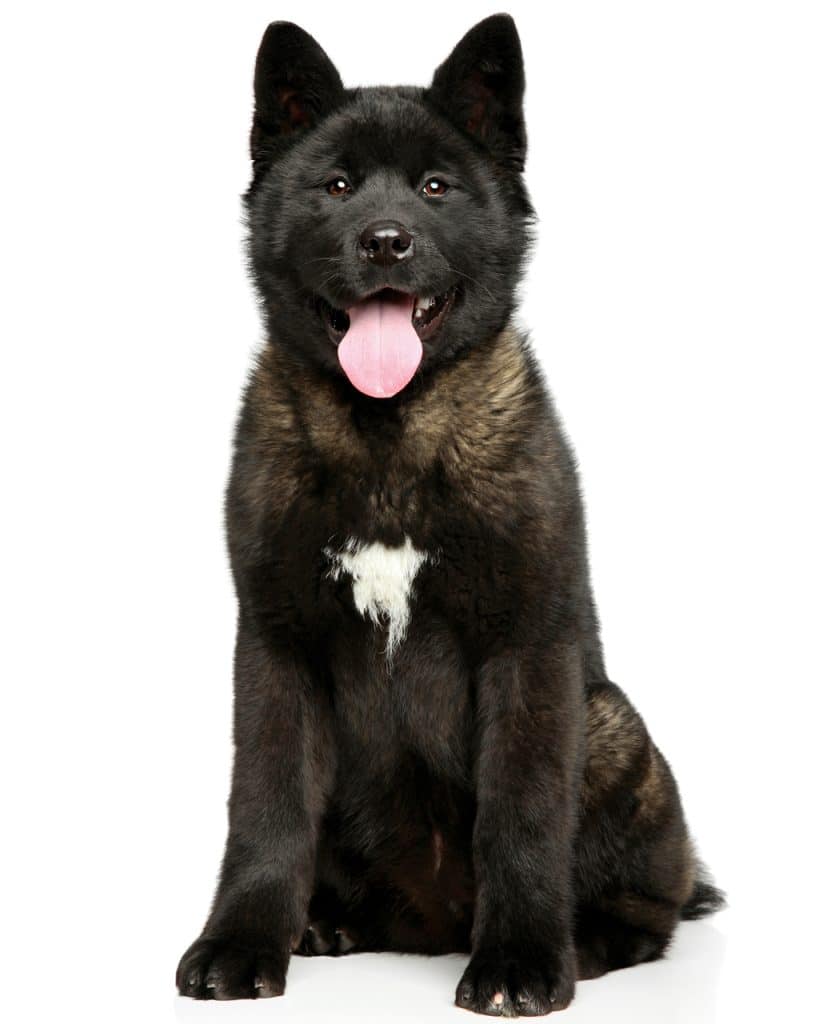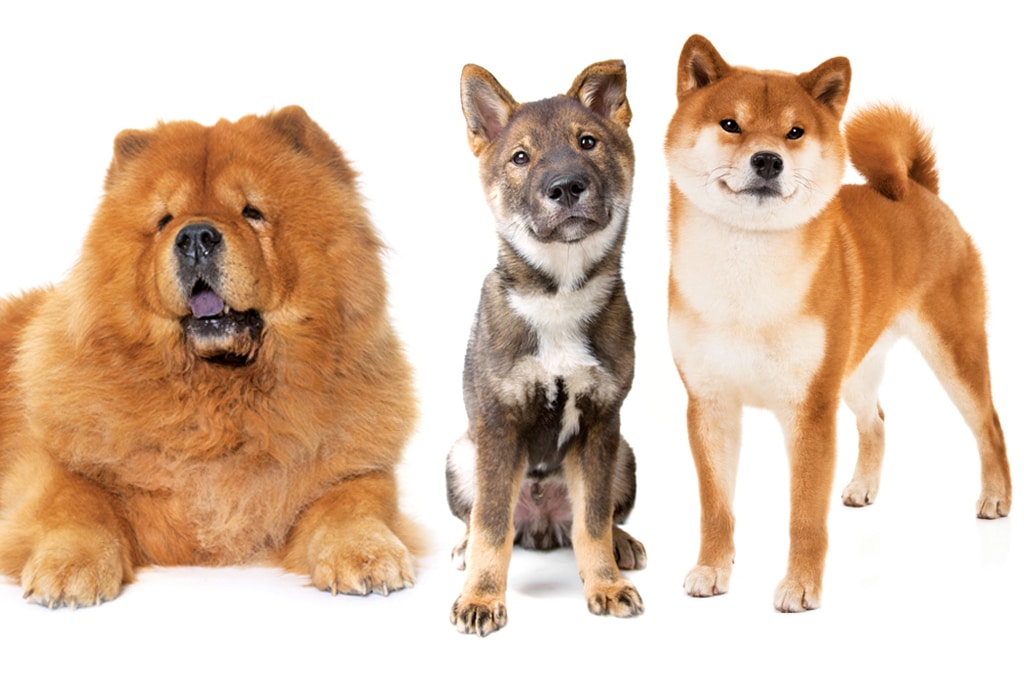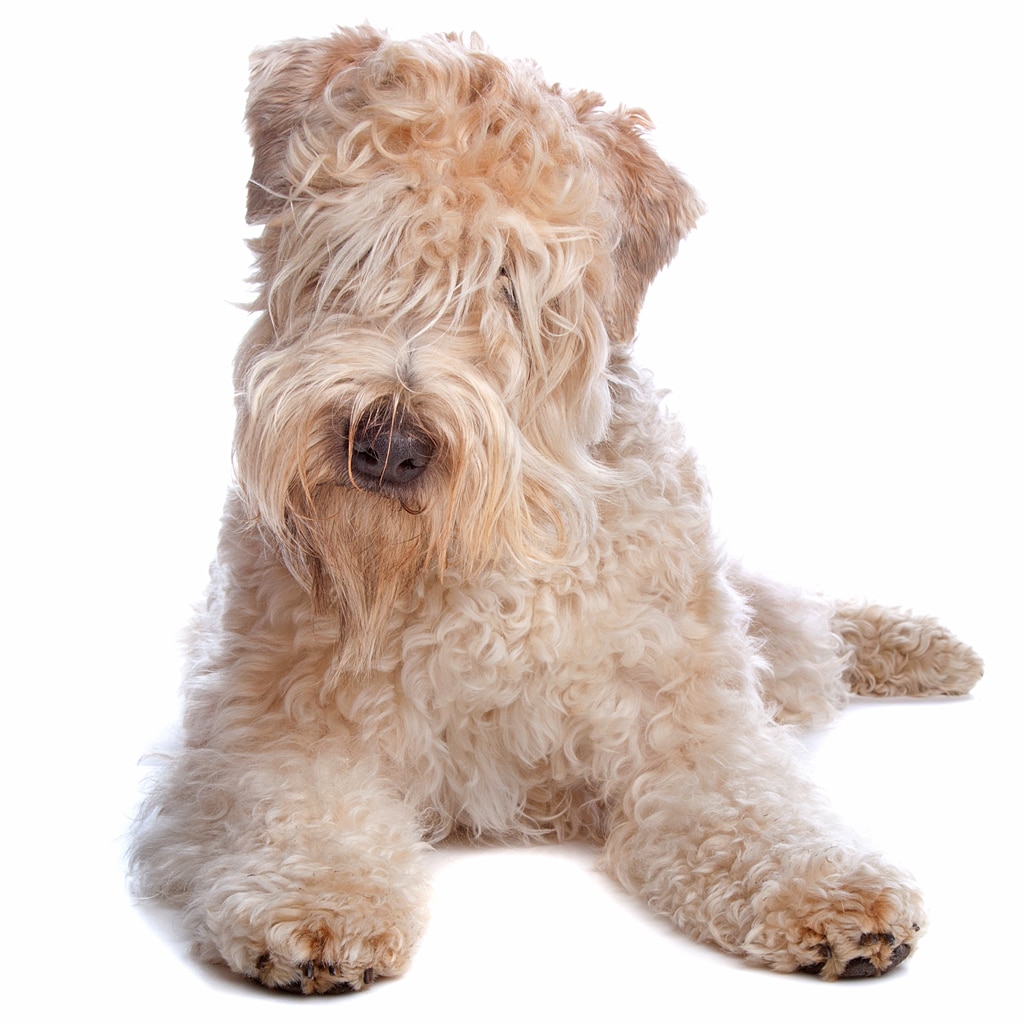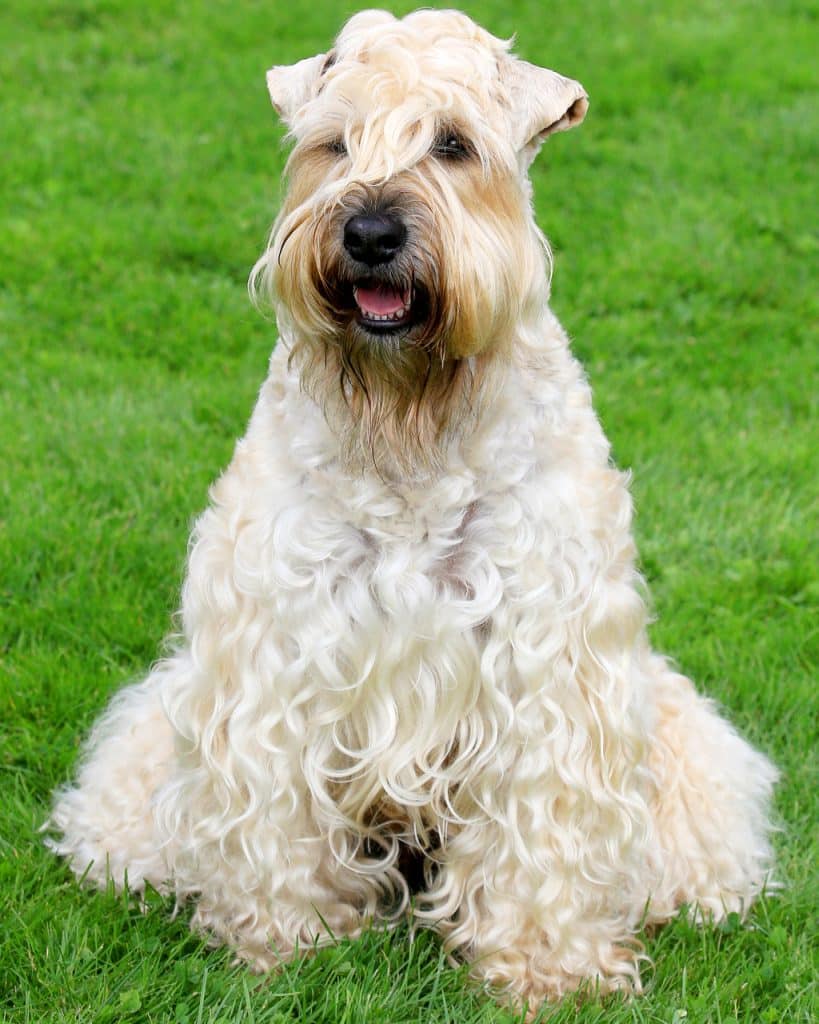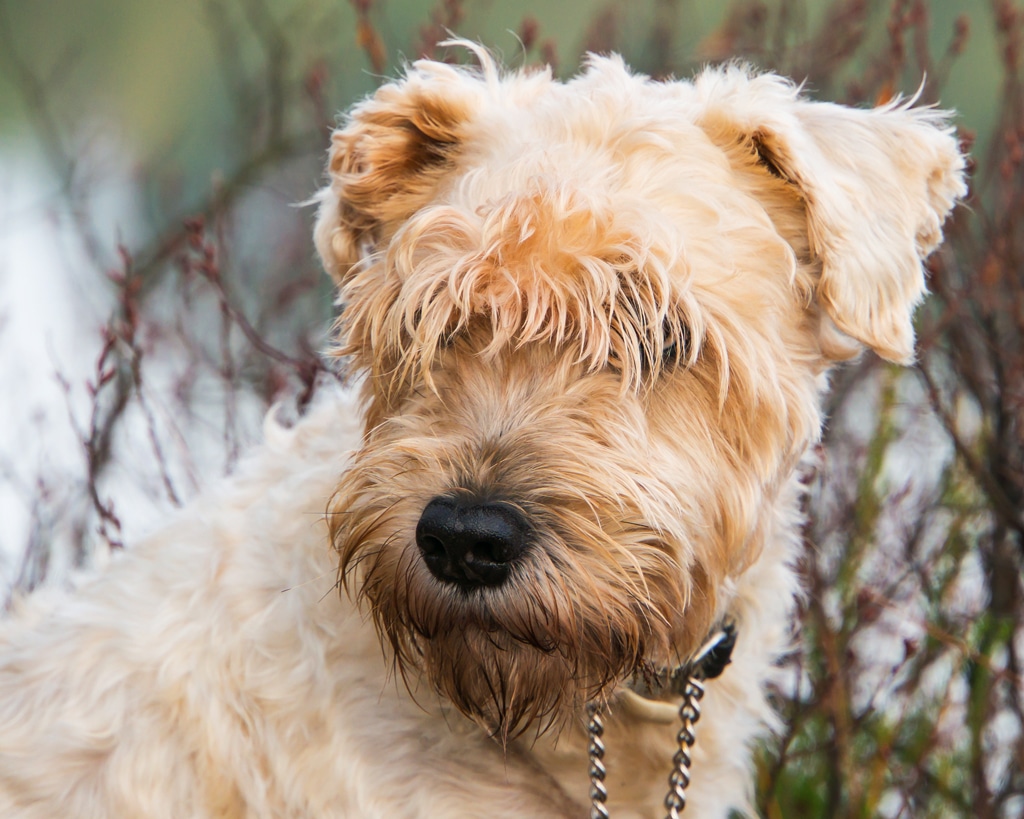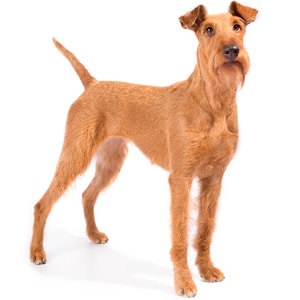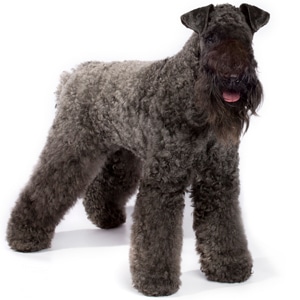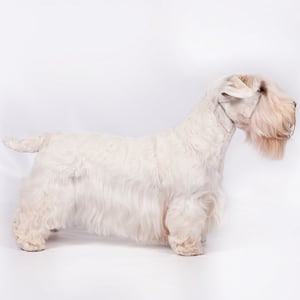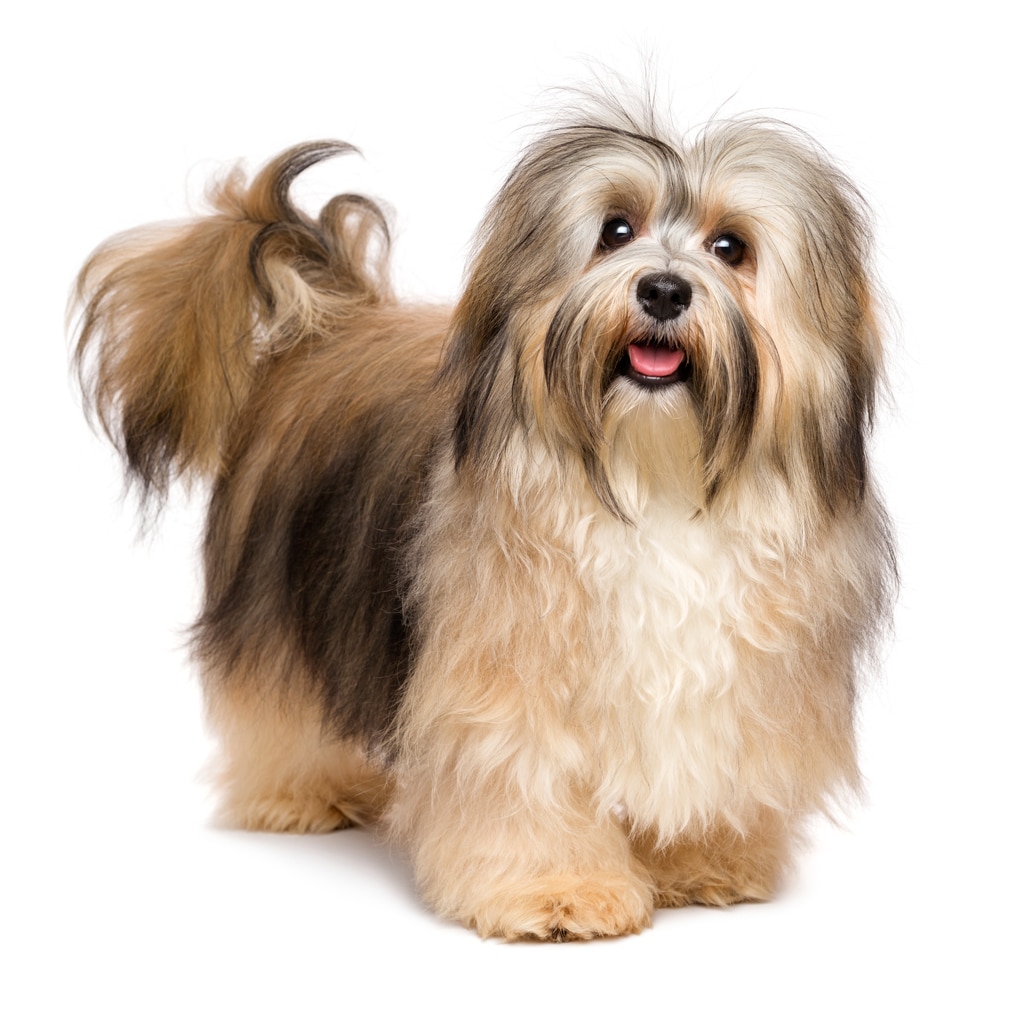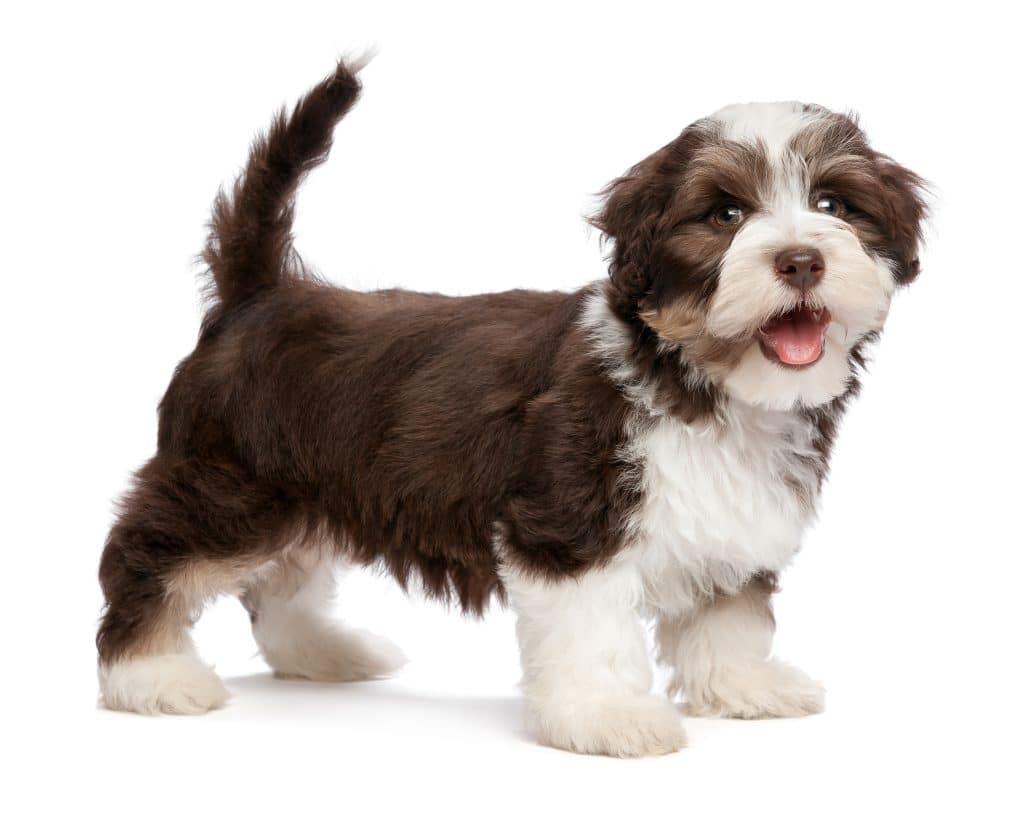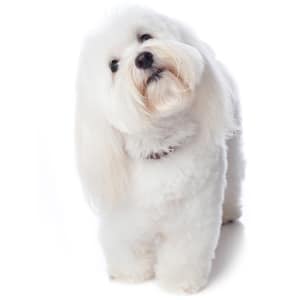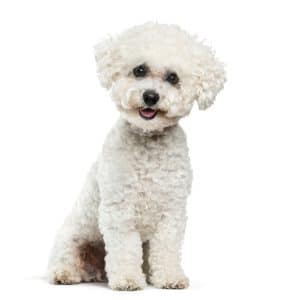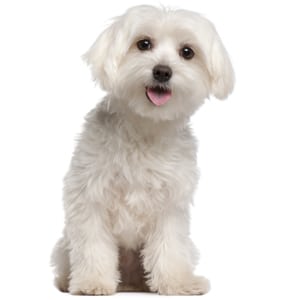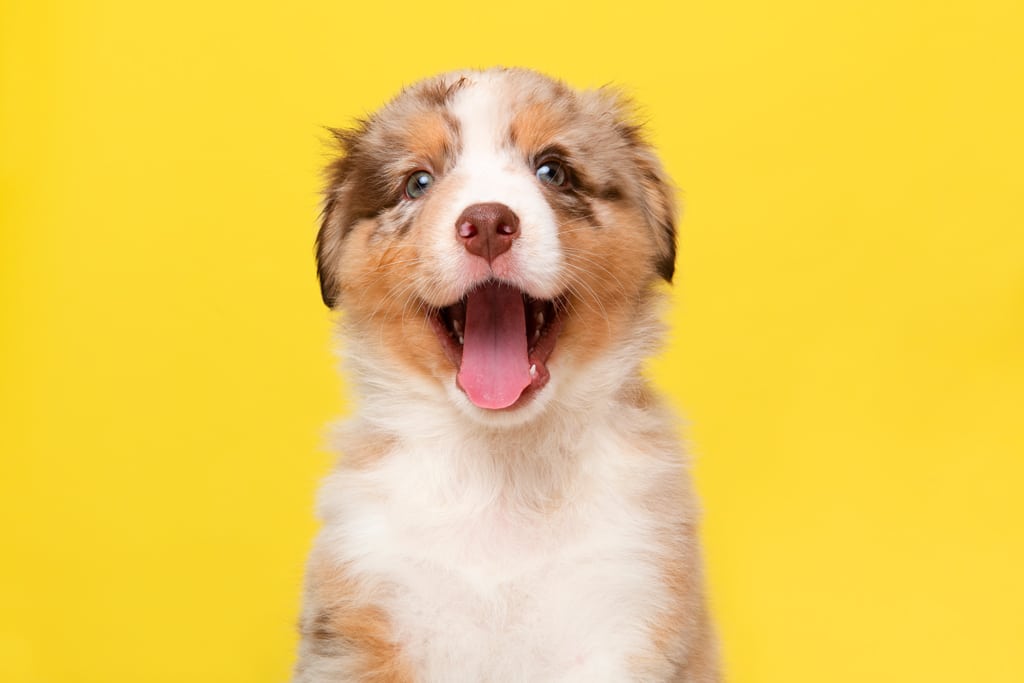- Dog CareDog LifeCommunity
- Photo Contest
Photo Contest- Giveaways
The Japanese Chin
With that astonished expression and elegant gait, this charming little dog can’t help but make people smile. This is an adorable breed with noble carriage that hints at aristocratic origins. Is the Japanese Chin right for you? Let’s find out.
Early History
Despite what the name may suggest, the Japanese Chin did not originate in Japan. The breed’s actual origin was in China… or perhaps Korea. Like many ancient breeds, its roots are debated. What’s clear is that these dogs are nobility—they were presented to Japanese royalty as gifts during the Silla Dynasty in 732 AD. Royal family members owned, cherished, and developed the breed we know today.
The Japanese Chin was a well-kept secret, all but unknown outside of Japan until the mid-1800s, when trading between Japan and other countries reopened. Often, one of these special little dogs was presented as a gift to solidify trade relations. As a result, the Japanese Chin slowly made its way to various parts of the world where, not surprisingly, the breed got plenty of attention.
Rin.Seiko/Shutterstock
Most Popular Dogs in the US
According to the most recent AKC registration statistics (2022)
[1] French Bulldog
[2] Labrador Retriever
[3] Golden Retriever
[4] German Shepherd
[5] Poodle
[6] Bulldog
[7] Rottweiler
[8] Beagle
[9] Dachshund
[10] German Shorthaired Pointer
[105] Japanese Chin
Dogs of Royalty
As they’d been in Japan, the Chin was a prized possession in England, serving primarily as a doting lapdog for royalty and members of the aristocracy. In 1863, King Edward VII presented his wife with a Japanese Chin. She was positively besotted with her pet and became a lifelong Chin fancier. Her devotion to the breed was pivotal in its increasing popularity in Europe and North America.
Get to Know the Japanese Chin
- Small– gentle handling is important
- Calm and confident
- Often described as cat-like
- Lap-dog extraordinaire
- A real performer who likes to learn tricks
- Eager to please, but has a stubborn streak
- Medium energy– happy to simply snuggle
Evolution of the Standard
The Japanese Chin was recognized by the American Kennel Club (AKC) in 1888. Breed Standard notes this is a small dog with a height ranging between eight and 11 inches at the withers. The head is wide, and the body is straight. A silky coat drapes elegantly over the body, and the long tail—often described as having the appearance of a flower in bloom—is carried over the back. The AKC accepts the breed in black and white, red and white, or black and white with tan points. The mark on the forehead—typically a blaze or line—is believed by many to represent the touch of Buddha.
An alert, inquisitive expression is key to the breed, and emphasized in the Standard. Without question, the Japanese Chin has one of the most perpetually astonished faces in the dog world. Those large, round eyes simply exude character, as does this breed’s personality!
Fun Facts
+ The Japanese Chin actually originated in China.
+ They were the companions of royalty.
+ They were bred to be as small as possible—small enough to fit in the sleeve of a woman’s kimono.
Dmiytro/Shutterstock
What Is It Like to Live with a Japanese Chin?
You often hear people talk about the Japanese Chin as cat-like. This reputation stems from a few traits, including the fact that—while they’ll likely bark to announce someone’s arrival—these dogs are typically quiet in the home. Also, like cats, Japanese Chin like to clean their faces with their paws, have a particular affinity for being perched on high places, and have a quirky habit of hiding in unexpected spots around the home.
The Chin is an affectionate and loyal dog—the breed’s roots as a lapdog are well established—and today’s Japanese Chin is happy to continue in that role and take in as much love and affection as you can offer. Around the home, they’re generally calm and mild-tempered.
Training and Socializing Your Japanese Chin
The Japanese Chin is intelligent and good-natured. As with all dogs, early socialization will serve them well. The goal is to ensure their confident nature extends beyond the comfort of your home—and lap!
The Chin does have a reputation for being a bit stubborn, so early positive-reinforcement training is important. Patience and a commitment to training will yield rewards. The well-mannered, well-socialized Japanese Chin is a joy to be around.
“The mark on his forehead—typically a blaze or line—is believed by many to represent the touch of Buddha.”
Activities and Fun
This breed has earned a reputation for being quite an entertainer, which stands to reason given its roots as a companion to Japanese royalty. Delighting people seems to come naturally to the Chin, and they’re well known for their ability to learn a variety of tricks.
A jogging companion, this is not—but they’re a great choice for those interested in other fun canine activities, such as Obedience, Agility (set up a DIY backyard agility course!), or Rally.
katamount/Shutterstock
Caring for Your Japanese Chin
The Japanese Chin is a single-coated breed whose coat can take a few years to fill out. Caring for and grooming this dog isn’t complicated.
Like other brachycephalic (short-faced) breeds, the Japanese Chin should not be exposed to extreme heat. Those oversized eyes can be prone to scratches and other issues. As with all purebreds, they are prone to some genetic diseases. If you’re thinking about sharing your life with a Japanese Chin, rescue or be sure to work with a conscientious breeder who is committed to health testing and producing puppies with sound temperaments.
Clever, full of affection, and utterly adorable, it’s a good thing that the Japanese Chin is no longer a breed reserved just for the upper crust. From their aristocratic beginnings to the comfort of your own lap, the elegant Japanese Chin is truly a treasure in every sense of the word.
Profile: The Japanese Chin
Size: Small
Weighs 7 to 11 pounds and ranges from 8 to 11 inches at the tallest point on the withers.Activity Level: 2/5
Playful and loves to learn tricks. A daily walk and some playtime will keep the chin fit and content.Grooming: 2/5
Moderate. Regular brushing and occasional bathing are all that are typically needed for this single-coated breed.Heritage:
Originally a prized companion reserved for Japanese nobility.For more information on Japanese Chin rescue in the U.S. and Canada, visit japanesechinrescue.org.
If you like the Japanese Chin, you might also consider the…
Pekingese English Toy Spaniel Pomeranian
The inset photos Pekingese and English toy spaniel AngieKerins / American Kennel Club; Pomeranian TomPitera / American Kennel Club» Read Your Breed For more breed profiles, go to moderndogmagazine.com/breeds
This article originally appeared in the award-winning Modern Dog magazine. Subscribe today!
The Affenspinscher
This small pup, known for its pert monkey-like expression, is full of curiousity and confidence. Loving but mischievous, there’s a whole lot of dog in this pint-sized package. Is the Affenpinscher right for you? Let’s find out.
Early History
Considered one of the oldest of the Toy breeds, the Affenpinscher has been around for centuries. Dogs unmistakably Affen-like can be seen in European artwork dating back to the 1600s. The dogs pictured are larger than today’s Affenpinscher, but unmistakable.
The breed’s earliest known roots trace back to Germany. Loosely translated, “affen” means “ape,” and “pinscher” means “terrier.” As far as back as the 1500s, various small terriers were staples in homes, shops, and farms throughout Germany and most of Europe. Their purpose? To control the rodent population. The Affenpinscher was one of the smaller terriers used for this purpose—and they excelled at their task.
Affens were selectively bred to emphasize their ratting skills and maintain their distinctive appearance. In the course of history, we’ve lost the exact mix of breeds, but experts believe that Pugs and various German Pinschers were among the breeds used to create the Affenpinscher.
Bred down in size intentionally, the Affenpinscher got smaller, but their tenacity and fearlessness as a ratter remained. This breed was also prized for security—the Affenpinscher is a notoriously curious and vigilant dog that tends to consistently alert owners to any visitors or strangers. The Affenpinscher also caught the attention of those in search of a small lapdog. Ratter, alarm-system, and cuddler extraordinaire—this is a versatile little dog.
By the late 19th century, Affenpinschers had gained popularity as companion dogs. It’s easy to understand why. With a fun and entertaining temperament combined with such a unique appearance, the Affenpinscher attracts attention. Versatile and useful in the home, they proved a great choice as a family companion who also kept the rat population under control.
Get to Know the Affenpinscher
- Toy-sized, but sturdy and tough
- Intelligent, but a little stubborn
- Fearless and tenacious
- Natural-born entertainers
- Good with other pets when socialized
- Some caution regarding small children
- Daily walks and some fun time will suffice
A Standard Evolves
The majority of the Affenpinscher’s earliest development took place in Munich. In 1896, the Affenpinscher was officially recognized by the German Kennel Club, and by 1913, the Affenpinscher breed standard was created. The breed made its way to the States and was accepted into the American Kennel Club (AKC) in 1936.
Today’s Affenpinscher is a toy-sized, wiry-haired dog with a very plucky personality. Despite their small size, this is quite a sturdy dog, not fine-boned or delicate in any way.
The AKC standard looks for an ideal height ranging from 9.5″ to 11.5″ at the withers. The Affenpinscher is somewhat square in shape, with the body length typically matching his height.
And that face! The Standard states that the Affen’s head should be carried confidently with a monkey-like expression, the eyes are round and dark.
The dense, rough coat is about an inch long on the body and shoulders. A longer, softer coat rests on the head, neck, chest, and stomach. The breed is accepted in a variety of colours, including black, gray, silver, red, black and tan, or beige.
Photo Ilona Didkovska/Adobe Stock
Few and Far Between
If you’ve never come across an Affenpinscher, you’re not alone. In 2022, the Affenpinscher ranked 148th on the list of 199 breeds registered by the AKC.
In 2013, an Affenpinscher named “Banana Joe” won the coveted Best in Show title at the Westminster Kennel Club Dog Show (WKC). His victory brought significant attention, showcasing the Affen’s unique appearance and entertaining personality on a worldwide scale. But while they’ve gained recognition and charmed admirers all over the world, this breed remains quite rare.
Living with the Affenpinscher
The Affenpinscher’s personality is anything but small. They’re widely regarded as one of the comedians of the dog-world, entertaining and delighting their people. They are confident, curious, and full of personality. These are wonderful family companions, but as with all breeds, there are a few quirks and considerations.
While the Affenpinscher is a sturdy, tough little dog, they’re well-known for their dislike of being manhandled, forced up, or otherwise “bothered.” For this reason, the Affen has earned a perhaps unfair reputation as a dog that’s not ideal for kids.
In actuality, the Affenpinscher can be a great family pet, but small children need to be supervised around dogs and taught that chasing, squeezing, holding down, or otherwise pestering these (and all) dogs will lead to problems. Some breeds might just roll with it… not the Affenpinscher.
While the Affenpinscher is generally good with other pets, a home where hamsters, bunnies, or other small rodents are pets might not be ideal. Given their history, their instinct will most likely be to dispatch little critters.
With other dogs and cats, they’re generally comfortable—early socialization is the key to success. Intelligent and alert, the Affenpinscher is like a four-legged alarm system. Very little will slip past them. You’ll almost certainly be alerted by barking should anyone come to your door.
Fun Facts
+ They are known to walk upright on their back legs
+ Their paw dexterity is quite advanced, so they love to play with and toss around toys.
+ French fanciers refer affectionately to the Affenpinscher as the “Diablotin Moustachu” or “Mustached Little Devil”
Photo Ilona Didkovska/Adobe Stock
Training and Socializing
The Affenpinscher is rather suspicious by nature. This tendency to be aloof or unfriendly can be easily overcome with plenty of early, positive socializing activities. They bond closely with their people and can be territorial.
In true terrier style, the Affenpinscher has earned a reputation as somewhat stubborn and hard to train. Yes, this breed is independent and opinionated, but this is a trainable dog. Affens love to please their people, and they’re very smart—both good traits when it comes to training.
Patience, practice, and making it fun will pay off. The well-mannered Affenpinscher is a delight to be around. They’re pleasant and respectful but cheeky and full of pep.
When it comes to housetraining, here again, patience is required. Like so many of the Toy breeds, Affens can be a little slow to master the whole potty routine. It takes time and patience—and crate training is very strongly advised.
Profile: The Affenpinscher
Size: Toy
Affenpinschers stand between 9 and 11.5 inches high and weigh 7 to 10 pounds.
Activity Level: 3/5
Exercise needs are moderate. This plucky pup will be happy with a daily walk or two.Grooming: 2/5
Moderate. Brushing to keep the wiry and softer coats mat-free, plus the occasional trim or stripping is all the affen needs.Heritage: Developed in Germany to help with rodent control and provide family companionship.
For more information on Affenpinscher rescue in the U.S., visit affenpinscherrescue.org. In Canada, visit affenpinscher.rescueme.org/ca.
Activities for Affenpinschers
Exercise requirements are minimal. A walk each day will keep them content. Affenpinschers love to play and are renowned for their ability to learn tricks, so factor in some “fun time” for these little comedians each day.
Outside supervision and, ideally, a fenced-in yard are best. They are territorial and, frankly, seem unaware that they’re actually a very small dog. Affenpinschers have been known to pick fights with much larger dogs.
For those who like to travel or simply want to take their dog along with them on their daily outings, the Affen is a good choice. This confident little dog is pretty much up for anything and happy to be a part of whatever you’ve got in mind.
As for activities, this confident but clown-like dog is a natural for therapy work. Their unique appearance and ability to learn lots of tricks will delight anyone in need of a smile. Sturdy and well-built, they’re also a fit for sports like agility and obedience.
Caring for Your Affenpinscher
This dapper little dog is not a challenge to care for or groom. The coat is thick and rough to the touch. They don’t shed much, but that wiry coat does need to be brushed regularly with a slicker brush. Occasional stripping and trimming will be required to keep them looking their best.
The Affenpinscher is a rare breed—hard to find and truly unique in appearance. It’s hardly any wonder that many people simply go bananas when they find themselves in the presence of these mischievous little monkey-dogs. With their expressive faces, their sweet but spunky disposition, and their fearlessness, they really are the complete ‘big dog’ package in pint-sized form.
If you like the Affenpinscher, you might also consider the…
Brussels Griffon Pug Miniature Pinscher
Inset Photos L to R: Okssi/bigstock, LustreArt/bigstock, cynoclub/bigstock
» Read Your Breed For more breed profiles, go to moderndogmagazine.com/breeds
This article originally appeared in the award-winning Modern Dog magazine. Subscribe today!
The Skye Terrier
The Skye Terrier has an incredibly striking and unique appearance—yet you might never have seen him! That’s because he’s such a rare breed that he is considered ‘at risk.’ His status as endangered is, honestly, hard to believe once you learn about this charming and fascinating breed.
Yet another of Scotland’s plucky terriers, this fellow comes from a land that is truly the stuff of magic and fairy tales. The Isle of Skye—the largest of Scotland’s islands—is characterized by harsh, beautiful terrain. Jagged mountains, lush landscapes, an abundance of waterfalls… this is a bucket-list-worthy destination. Today, it remains a sacred place where the legends of fairies, giants, and kelpies are still told—and it’s the birthplace of this rare breed.
Life on White/Bigstock
The Skye Terrier’s origins date back to the 14th century, making him the oldest of Scotland’s breeds. Written records do not exist to detail the development of this terrier, but oral traditions alone for the Skye are centuries-old and, not surprisingly, are as steeped in mystery as the island itself.
It has been said that, during the 1500s and 1600s, ships crashed among the treacherous reefs surrounding the Isle of Skye. One theory is that the dogs from those ill-fated vessels made it to shore and subsequently bred with the local terriers. Considering that ships came from all manner of ports and picked up dogs along the way, it is a solid theory that could explain the long, silky coat that sets this breed apart from his closest terrier cousins.
The terriers that were on the island at that time would have developed from a variety of sources, among them, the Vikings. A look at the Swedish Vallhund (whose history can be traced to the Viking era) shows a clear resemblance of body type. Like the Vallhund, the Skye is a compact, solidly-built dog—about twice as long as he is tall.
In his earliest days, the Skye earned a reputation as a tough, working terrier that was adept at tracking the marine and wildlife so abundant on the island, including weasels, badgers, and otters. Strong and with plenty of stamina, the Skye had the agility to work along the rocky cairns and rugged landscape. Some say he is without match in the terrier world, for his ability to tackle rocky terrain, dens, burrows, or even waters where needed.
That double-coat isn’t just beautiful—it’s practical. A harsh outer coat and soft undercoat protects from the inclement weather for which the island is known.
The breed certainly gained some notoriety off-island when it became a favourite of Queen Victoria. A renowned dog-lover, she had Skye Terriers and this led to a boost in their popularity (especially among the aristocracy) during the mid-1800s. Additional interest in the breed came from their depictions in Sir Edwin Landseer’s paintings.
Kamira/Bigstock
Greyfriars Bobby
Many are familiar with the tale of Greyfriars Bobby, a terrier who spent 14 years guarding the grave of his beloved owner in 19th-century Scotland. But did you know that Bobby was a Skye Terrier? Bobby, cared for and fed by townsfolk who couldn’t help but love him, remained at his owner’s grave until he passed away in 1872. A commemorative statue remains today– a symbol of the incredible loyalty that Bobby had– and for which all Skyes are known.
The Skye’s popularity extended to North America, and the American Kennel Club (AKC) recognized the breed in 1887. According to the AKC standard, ideal shoulder height is 10 inches for males and 9.5 inches for females. Proportions are strongly emphasized, as the breed is expected to be twice in body length to his shoulder height, so around the 20-inch mark.
His ears may be dropped or naturally upright, and the AKC accepts the breed with a coat in varying shades of black, blue, grey, silver platinum, fawn, or cream colours. Black points on the ears, muzzle, and tip of the tail are desired.
Why the Skye has dropped so significantly in popularity over the years may be as simple as the fact that so few people know of the breed. Some speculate that the long, silky coat is a deterrent as it looks like a lot of work (it really isn’t.) Regardless, the breed is now so rare that the Skye Terrier is considered ‘at risk.’ In 2020, he ranked 183 on the list of 195 breeds registered with the AKC, in terms of popularity.
Most Popular Dogs in the US
According to the most recent AKC registration statistics (2022)
[1] French Bulldog
[2] Labrador Retriever
[3] Golden Retriever
[4] German Shepherd
[5] Poodle
[6] Bulldog
[7] Rottweiler
[8] Beagle
[9] Dachshund
[10] German Shorthaired Pointer
[189] Skye Terrier
There can be a tendency to lump all terriers together. This is a mistake, and to be sure, the Skye Terrier’s personality is as unique as his appearance. He’s arguably the most relaxed and calm-natured in the entire group, and he’s also known for being hopelessly devoted to his human family. Fanciers note how in-touch this breed is with the emotions of his guardians—this sensitive dog is unlikely to leave your side, especially if you’re feeling blue. The Skye also has a reputation for being patient with children and tends to keep a watchful eye on them. As for strangers, it can take a bit for the Skye to warm up to new people, but he’ll come around.
“The breed is now so rare that the Skye Terrier is considered ‘at risk.’”
Considered highly intelligent and, in typical terrier fashion, head-strong, training and socialization must be a priority from an early age to ensure basic obedience is learned. Only positive training methods should be used with this sensitive breed (and all breeds).
Exercise requirements are modest. Daily walks and some play time will suffice. That said, this is quite an agile and athletic dog—after all, he comes from a land of extremely rugged terrain. Skye fanciers around the world let out a collective gasp when, in 2014, a Crufts announcer commented that the breed probably wouldn’t ever be seen doing agility. In fact, these dogs can and do excel in agility. Beauty and athleticism are not mutually exclusive!
The good news is that training, play time, and canine sports are all things the Skye can excel in, because he views all of the above as time for bonding with his people—and that’s what drives this canine love-bug.
Radomir-Rezny/Bigstock
Profile: The Skye Terrier
Size: Medium
The Skye is about twice as long as he is tall. Shoulder height ranges from 9.5″ to 10.” He’s strong and sturdy, weighing between 35-40 pounds for males and 25-30 pounds for females.Activity Level: 4/5
The Skye is pretty chill for a terrier. A long daily walk and some play time will suffice. However, he’s naturally athletic and agile– if you want to get out and get active with this breed, he’ll be up for it.Grooming: 3/5
Regular brushing for this double-coated breed will keep him looking silky and beautiful. The hair around his eyes will need a bit of trimming, and keeping those nails short is important.Heritage:
A low-lying, hearty terrier built to withstand the harsh terrain on the Isle of Skye, and used for hunting among the rocky cairns.For more information on Skye Terrier rescue, visit stca.us/rescue.
Grooming is a consideration, although the stunning, silky coat isn’t nearly as much work as you might imagine. Weekly brushing is an absolute must, as is a routine ear-check for dirt or excess wax. But the coat doesn’t require trimming. He may not look it, but the Skye is actually quite a natural beauty! Ideally, starting to familiarize the Skye with grooming from an extremely early age is best. Most Skyes love being groomed—it’s just another way they can remain close to their people.
Fortunately, the Skye Terrier is quite a hearty and healthy breed but, as always, it’s important to work with a reputable breeder who conducts health clearances on foundation stock and puppies.
He’s such a treasure, it’s hard to believe that the Skye Terrier is the most vulnerable breed in the United Kingdom—literally on the verge of extinction. But, just like the legendary island from which he originated, the Skye Terrier is exotic and truly known to very few. Take the time to learn about the breed. They’re loving and loyal companions. The Skye’s worth a look and most definitely worth preserving.
If you like the Skye Terrier, you might also consider the…
Cairn Terrier Scottish Terrier Glen of Imaal Terrier
Inset photos from left to right: Life on White/bigstock.com; Ihar Halavach/bigstock.com; Angie Kerins © American Kennel Club
» Read Your Breed For more breed profiles, go to moderndogmagazine.com/breeds
The American Staffordshire Terrier
The American Staffordshire Terrier goes by a few names—AmStaff and Staffie, for starters, but you’d likely know him to see him. But how much do you really know about this oftentimes misunderstood breed?
In the dog world, it’s hard to think of a breed that more perfectly exemplifies the importance of not judging a book by its cover. With his powerful and muscular frame, large head, and that intense gaze… this dog has presence. Does he appear intimidating? To some. But in actuality, the AmStaff is perhaps the sweetest, most loving and hopelessly devoted breed in all of dogdom.
Like other “bully breeds,” the American Staffordshire Terrier’s origins date back to England during a period in the 1800s when these dogs were used in various blood sports to bait and fight each other or large animals like bulls and bears. The “sports” were cruel and inhumane on every level conceivable; however, a number of today’s wonderful breeds emerged and evolved from them; the American Staffordshire Terrier is one of them.
eriklam/Bigstock
T
he breed is a combination of Bulldog and terrier: the Bulldog is a consistent genetic aspect to the various ‘bully’ breeds; terriers are the other part of the equation. (England is renowned for its love of terriers in various shapes and sizes, and Bulldogs have been carefully bred in England for centuries). The combo of Bulldogs and various terriers—including the now-extinct White English and Black-and-Tan Terriers—are at the root of the breed we know today as the American Staffordshire Terrier.
With their stocky and muscular frames, large jaws, and that tenacious terrier spirit, the early AmStaffs were sought after for their role in dog-fighting, up until the practice was banned in the 1830s. The ban didn’t completely end the practice, as enforcement was an issue, but the bully breeds’ purpose shifted to include general-purpose work and family companionship.
As early as the 1870s, immigrants from England and Ireland brought their ‘pit dogs’ to America. At the time, they were known as Pit Bull Terriers, American Bull Terriers, or even Yankee Terriers. Regrettably, some were used for dog-fighting in the early days. But Americans thankfully saw much greater potential for these dogs. They embraced them for their usefulness as general-purpose farm dogs and hunting companions and discovered quickly that—despite their tough appearance and origin—they were loving and devoted family members.
Embraced by American culture almost from day one, the AmStaff evolved into a distinctly American breed, one considerably larger than its close cousin, the Staffordshire Bull Terrier. Since the 1930s, AmStaff fanciers made a conscious effort to focus on honing temperament and type through selective, thoughtful breeding. Dogs that seemed aggressive were pulled out of the reproductive gene pool. Beefing up the breed in size and developing an extremely muscular and agile body type was also prioritized.
The breed was recognized by the American Kennel Club (AKC) in 1936, though he was known still at that time as the Staffordshire Terrier. It wasn’t until 1972 that the AKC switched the breed’s name to recognize him as a uniquely-American breed—the American Staffordshire Terrier.
Today’s AmStaff is a medium-sized dog that moves with great ease and agility. For his size—the AKC accepts the breed at 18 to 19 inches at the shoulders for males; 17 to 18 for females is preferred—he is extremely strong. The AKC standard emphasizes a well-proportioned dog with a calm disposition. A relatively popular breed, the AmStaff today ranks 85 of the 197 breeds in the AKC.
Most Popular Dogs in the US
According to the most recent AKC registration statistics (2022)
[1] French Bulldog
[2] Labrador Retriever
[3] Golden Retriever
[4] German Shepherd
[5] Poodle
[6] Bulldog
[7] Rottweiler
[8] Beagle
[9] Dachshund
[10] German Shorthaired Pointer
[85] American Staffordshire Terrier
The American Staffordshire Terrier coat is very short, stiff, and glossy. The AKC accepts the coat in any colour, solid, parti, or patched. All white, more than 80 percent white, black and tan, and liver colours are not encouraged.
“Loyal, smart, and loving. For those who simply love to love their dogs, the rewards here will be plenty.”
So, what’s this breed like to live with? I’d say he’s an American treasure.Staffies are known for being one of the most (if not the most) docile and gentle among the bully breeds. They are active and playful, but not nervous or edgy. In short, it is incredibly easy to simply be around the AmStaff.
As a family companion, the American Staffordshire Terrier has a well-earned reputation for being exceptionally patient with kids. This is a breed that becomes positively devoted to his family. He craves companionship and affection. For those who simply love to love their dogs, the rewards here will be plenty. The AmStaff is loving and loyal; he will not thrive in a home where he is an outsider in any way, shape, or form. This is a family companion through and through.
This is not an outdoor dog. His short coat aside, he’d pine for time with his people. And while he may look intimidating, he’s the wrong choice for those in search of a dog to guard the home. This notoriously friendly breed is most likely to greet strangers with a wagging tail and a big, beautiful smile.
Life on White/Bigstock
All dog guardians have a responsibility to raise well-socialized pets with good manners. But with a strong and powerful breed, this responsibility is particularly important.
Your AmStaff should be introduced from an early age to a wide range of people and pets. The breed’s reputation for being aggressive towards other dogs may be an unfair stereotype—responsible breeders do not keep ‘dog hot’ dogs in their breeding programs—but leaving an untested AmStaff unsupervised with other dogs isn’t advised. The same can really be said for all powerful dogs, most namely those who lack training and are not well socialized.
Letting your AmStaff ease into new friendships with other pets is a good idea. Common sense plays a role here—he’ll simply do better if he doesn’t have a new companion dropped into his orbit.
And while it is true that the AmStaff is a couch-cuddler of legendary proportions, this is an athletic breed that absolutely needs physical exercise to thrive. The American Staffordshire Terrier’s strength and agility, combined with an intense desire to please his people, make the breed an exceptional candidate for any number of canine sports and activities—Agility, Flyball, Dock diving… you name it, and this up-for-anything lovebug will give it a shot and, likely, revel in the fun and challenges.
One other aspect of life with the AmStaff that’s worth mentioning is that he is known to dig. Terriers and perfectly manicured gardens and lawns… well… just know what you might be getting in for.
Profile: The American Staffordshire Terrier
Size: Medium
AmStaff’s stand between 17 and 19 inches at the shoulder. They are heavily muscled and extremely powerful for their size.Activity Level: 4/5
Daily walks are an absolute minimum for this active breed. Better yet, take advantage of the AmStaff’s strength, agility, and eagerness to please and partake in some canine sports!Grooming: 2/5
With his short coat, the Staffie’s grooming needs are minimal. Just the basics are required to keep him looking dapper– some regular brushing and keeping those nails trimmed.Heritage:
A bull-and-terrier breed, used originally in England and Ireland for baiting and fighting purposes.For more information on AmStaff rescue in the U.S., visit staffordshireterrier.rescueme.org. In Canada, visit staffordshireterrier.rescueme.org/ca
Like with other bully breeds, anti-dog legislation can rear its ugly head. State by State and town by town, rules vary. This breed has been banned in some areas and can also be targeted as problematic for home insurance. Hopefully, the tide is turning, as we do see some communities repeal breed-specific legislation and focus on punishing the deed not the breed.
Health-wise, the AmStaff is quite a healthy and hearty breed, although as with any purebred it is critical to work with a breeder who is committed to both the health and good temperament of their dogs.
As a breed, the American Staffordshire Terrier is largely misunderstood. His muscular frame and intense gaze may strike you as intimidating, but by nature he’s a soft-hearted, loving, and extremely eager-to-please dog. There’s a lot more than meets the eye when it comes to this misunderstood “tough guy.” To me, he is among the finest of breeds, and I think it would be an honour to experience that kind of love and loyalty.
If you like the American Staffordshire Terrier, you might also consider the…
Life on White/bigstock.com
Staffordshire Bull Terrier Bull Terrier Boxer
» Read Your Breed For more breed profiles, go to moderndogmagazine.com/breeds
The Bloodhound
There’s no mistaking the Bloodhound. That trademark long face, those soul-piercing eyes, and the endless wrinkles and folds of his skin! This is a truly substantial dog who strikes a unique and dignified pose. He’s the most renowned scent-tracker in the world. What’s his story?
The Bloodhound is more popular in America than anywhere else in the world, both in “real life” as well as in books and movies, but he actually originated in medieval Europe.
In the 7th century, French monk and passionate hunter Francoise Hubert dedicated his life to breeding hunting dogs capable of tracking even the coldest of scent trails—dogs who could find their quarry when all others had given up. Over the years, a variety of dogs were introduced into the breeding lines, many of which had been brought back from far-away travels by Crusaders.
On hunts during the medieval period, Bloodhounds were kept on leash. Their role was to follow the scent of large prey—typically a boar or deer. Once they caught the scent, pack hounds would complete the chase. The Bloodhound remained leashed and was not part of the kill, though legend has it he was always given a special reward from the carcass of the animal. His critical but limited role in hunting undoubtedly explains, at least partly, his gentle nature. A world-class hunter he is; a killer he is not.
For many centuries, the Bloodhound flourished in France and England. Almost exclusively owned by royals and members of the nobility, Bloodhounds were cherished by the likes of William the Conqueror and Elizabeth I.
As was the case with so many breeds, the French Revolution had a devastating impact on the Bloodhound population. Members of the aristocracy left their homes and fled for their lives; dogs were often casualties amid the chaos. The once-great hunts were no more and the Bloodhound’s numbers in France dwindled nearly to the point of extinction.
The breed was still prized in England, however, and the Bloodhound continued to be used for hunting there. In fact, by the 16th century, the Bloodhound had also become recognized for playing a valuable role in law enforcement, tracking down fugitives.
✔️ Friendly and patient
✔️ Good with kids and fellow mammals
✔️ Craves companionship
✔️ Smart but notoriously stubborn
✔️ Energetic and athletic
✔️ Large-sizedIn the Victorian era, the breed flourished. With the advent of the dog show came a whole new reason for people to take interest in the breed. Queen Victoria was a fan and first entered one of her Bloodhounds in a dog show in 1869. At the same time, the role of the dog was shifting. Dogs weren’t strictly working animals or companions for wealthy elites. They were becoming loving companions for everyday folks.
“Neat-freaks will have to contend with the realities of dog drool, because the Bloodhound is an accomplished slobber-slinger.”
It wasn’t long before the Bloodhound made his way to America. The Bloodhound was recognized by the American Kennel Club (AKC) in 1886 and was first entered at the Westminster Kennel Club Dog Show in 1888. Fanciers took an immediate interest, and many dedicated considerable time and interest into furthering the breed’s type and temperament. The American Bloodhound Club was founded in 1952.
Back in the UK, fox hunting had gained popularity, and the Bloodhound’s numbers declined as a result. (With greater ease in finding the fox and a faster style of hunt, the Bloodhound was used less frequently.) Later on, the Second World War had a devastating impact on England’s dogs and the Bloodhound was no exception. Fortunately, after the War, some of the finest Bloodhounds from America were exported back to their original homeland as part of an effort to introduce healthy breeding stock and revitalize the Bloodhound population there.
Today’s Bloodhound is a large dog. The AKC accepts the breed at heights ranging from 23 to 25 inches and 25 to 27 inches, with greater height preferred. Weights range from 80 to 100 pounds for females; 90 to 110 pounds for males—and a well-proportioned dog is desired. The AKC accepts coat colours in black and tan, liver and tan, and red. A small amount of white is accepted on the chest, feet, and tip of the tail.
On the matter of scenting ability, the Bloodhound has no equal. His sense of smell is so keen that he’s able to pick up even the coldest of scents over great distances and many days. This coupled with great power and stamina, plus a “never give up” mindset make him quite literally the ideal tracker. For these reasons, the Bloodhound is used today around the world by law enforcement agencies in their pursuit of criminals, missing people, and objects they are trained to detect.
The Bloodhound is a beautiful dog, but he’s not the right choice for everyone. For starters, he’s very large and, while he’s easygoing and patient with kids, one swat of his tail could easily knock a toddler down. He’s not suited for apartment living. This dog needs room to roam.
Neat-freaks will have to contend with the realities of dog drool, because the Bloodhound is an accomplished slobber-slinger. The name of the game is to have rags and wipes strategically placed throughout your home for use as needed. It’s very manageable, but if you want a pristine house, it’s something to consider, because there is no such thing as a slobber-free Bloodhound.
Most Popular Dogs in the US
According to the most recent AKC registration statistics
[1] Labrador Retriever
[2] German Shepherd
[3] Golden Retriever
[4] French Bulldog
[5] Bulldog
[6] Poodle
[7] Beagle
[8] Rottweiler
[9] German Shorthaired Pointer
[10] Pembroke Welsh Corgi
[51] The Bloodhound
As for his odour, like many of his scent-hound cousins he’s got a rather oily, earthy, musty scent that comes and goes with weather and exercise and such. Most breed fanciers would say it’s just a trade-off for that unique and glorious coat and you get used to it.
Those in search of a dog that offers home protection are barking up the wrong tree with this breed. He doesn’t have a fierce bone in his body. In fact, like most hounds, he is often aloof with strangers. When someone comes to the house, he may bark like crazy—or ignore them. Some Bloodhounds are very quiet to live with.
The Bloodhound is a pack animal who craves the company of others. He’s happiest in a home where there are other dogs or cats, and he is not suited for outdoor living. He bonds closely with his people and wants to be near them.
From the start, socialization and obedience training are important. Hounds are always going to give even the most advanced Obedience handler a run for their money, and the Bloodhound is no exception. In fact, some believe him to be the most stubborn of the whole group!
Starting at the puppy stage, train, train, train. Of course, only use positive reinforcement methods. You cannot be harsh with this gentle soul (or any other dog), though you must be firm with him. To be sure, getting the Bloodhound to a well-mannered, well-trained state requires a commitment. If you don’t have the time, resources, or patience to invest in months of training, find another breed. He deserves a guardian who will take the time needed so he becomes the best dog he can be.
Profile: The Bloodhound
Size: Large
Strong and well-proportioned, heights range from 23 to 27 inches and weights from 80 to 110 pounds.Activity Level: 4/5
Above average. This active breed could get by with one long walk a day, but he’d prefer more. His strong instinct to work makes him a great fit for canine sports, most notably tracking.Grooming: 4/5
Weekly brushing will suffice but he does shed seasonally. Daily attention to cleaning his skin folds and learning to care for his ears is important.Heritage:
The bloodhound was developed in medieval France to assist pack hunting of deer and boar. Today, his keen sense of smell is also used to assist law enforcement in search and rescue.For more information on Bloodhound rescue in the U.S., visit bloodhounds.org. In Canada, visit canadianbloodhoundclub.com.
There is a popular misconception that Bloodhounds are lazy. Not so. This is an active dog who was bred to run for hours on end. He requires daily exercise. Very long walks daily are a minimum and, once he reaches adulthood, he could be an excellent running companion. He’ll be happiest in a home where he has a large yard to roam about. With his strong tracking instincts, a fenced-in yard (ideally six feet or higher) is an absolute must. So is remaining on-leash at all times when out.
Grooming the Bloodhound requires time and attention. His coat is loose and hangs down with many folds. He needs to be brushed once a week using a hand mitt and a damp cloth to clean all of the folds in his skin.
As well, the Bloodhound’s ears are prone to infection and require ongoing care. Your veterinarian can show you how to gently clean his ears with a safe cleaning solution once a week. That aside, the Bloodhound is a generally healthy dog, but like all purebreds, he may be prone to some genetic conditions.
If he were a work of art—and, let’s face it, he really is—he’d be what we might call a study in contradictions. He’s immense, powerful, and hardworking, but he’s calm and sensitive, a sweet soul who craves both human and animal companionship. You’d be hard-pressed to find a more tender-hearted companion, so if you can meet his needs, you’ll be rewarded with a lifetime of love and devotion.
If you like the Bloodhound, you might also consider the…
Black & Tan Coonhound Bavarian Mountain Scent Hound Hanoverian Scenthound
» Read Your Breed For more breed profiles, go to moderndogmagazine.com/breeds
The Border Terrier
“What kind of mix is he?” That’s a typical comment when a Border Terrier walks in the room. Well, he may not look fancy, but he’s anything but ordinary. This scruffy little character might pass under your radar, but he shouldn’t. This terrific terrier with a rich history is a thief of hearts.
This plucky little dog was originally developed in the 19th century by shepherds and farmers in the border region between England and Scotland. With herds grazing openly, the threat to sheep from predators was significant. They needed a tough, hard-working terrier who could handle rough terrain and weather, while keeping up with horses. A leggy terrier would fit the bill, but they also needed a dog that was small enough to go to ground and drive foxes from their dens.
cynoclub/Bigstock
Most Popular Dogs in the US
According to the most recent AKC registration statistics
[1] Labrador Retriever
[2] German Shepherd
[3] Golden Retriever
[4] French Bulldog
[5] Bulldog
[6] Poodle
[7] Beagle
[8] Rottweiler
[9] German Shorthaired Pointer
[10] Pembroke Welsh Corgi
[88] Border Terrier
In developing the breed, a variety of other terriers were introduced for type and temperament, most notably the Bedlington and the Dandie Dinmont. Interestingly, because this breed needed to work and live alongside other dogs, such as Fox Hounds, there was a need to veer from a traditionally-terrier temperament. The trademark terrier stubbornness is milder in the Border Terrier, and unlike many terriers, he’s able to quickly make canine friends. This easygoing personality is a hallmark of the Border Terrier and sets him apart from his more argumentative cousins.
Efforts to hone the breed were ongoing. While the Border Terrier was first accepted in 1920 by The Kennel Club, paintings of fox hunts dating back to the 1860s show dogs bearing remarkable resemblance to the breed we know today. The breed was recognized by the American Kennel Club (AKC) in 1930.
Radomir Rezny/Bigstock
The Border Terrier has a fairly long and narrow body. His determined, alert gaze is offset by a sweet, otter-like face. Weights range for males from 13 to 15 ½ pounds and females 11 ½ to 14. Proportions are important in the AKC standard. The height at the dog’s withers should be just slightly greater from the distance from the withers to its tail.
“Playful and rambunctious, a Border Terrier may just turn out to be the best playmate your child ever has.”
The Border Terrier has a short, dense undercoat and wiry topcoat. The AKC accepts red, grizzle and tan, blue and tan, or wheaten coat colours.
This is a dog bred to be hard-working, and he still can be—but he’s also a loving and devoted family companion. The Border Terrier will never thrive as an outsider.
He’s happiest with his people, including children with whom the breed is notoriously loving. Playful and rambunctious, a Border Terrier may just turn out to be the best playmate your child ever has.✔️ Polite
✔️ Good with kids & other dogs
✔️ Obedient
✔️ Smart
✔️ Energetic & athletic
✔️ Small-sizedThe Border Terrier is an active breed and needs daily exercise. Terriers are known for their stubborn streaks, but the Border is among the more biddable of the group’s members. He is intelligent and will thrive with positive reinforcement training.
At home, daily walks and lots of play time are a minimum to keep this busy breed happy. Border Terriers respond well to obedience training and, given their innate desire to work out solutions and overcome challenges, sports like Agility, Tracking, and Earthdog are well-received by this tenacious terrier.
One thing to bear in mind is that he can be prone to make a run for it. Those working instincts remain strong and he loves to give chase… especially to smaller animals. Outside, keep him in a safe, fenced-in yard or on-leash.
Profile: The Border Terrier
Size: Small
A well-proportioned breed with legs very close in height to the length of his back, the Border Terrier weighs between 11.5 and 15.5 pounds.Activity Level: 4/5
Above average. This active breed required lots of exercise to keep him happy. Daily walks and play time are a must. His instinct to work makes him a great fit for canine sports.Grooming: 4/5
His dense, weather-resistant coat does require some care, and is best brushed and hand-stripped, not shaved.Heritage:
Developed in the border region between England and Scotland to aid farmers and shepherds by going to ground and driving foxes from dens.For more information on Border Terrier rescue, visit btcoa.org.
Those seeking a companion for outdoor adventures, take note! This is a terrific walking and hiking companion. He’s athletic and sturdy and he’ll follow you anywhere.
Grooming requires a bit of effort. The Border Terrier’s wiry overcoat should be brushed and hand-stripped, not sheared, as it protects him from the elements. Learning to hand-strip your Border Terrier isn’t difficult and will save you some expense.
The Border Terrier is a healthy and hearty breed with relatively few genetic problems. If you’re considering a puppy, work with a reputable breeder who takes great care to ensure their puppies possess a sound temperament and are in good health.
Plucky, scraggly, and playful, the Border Terrier is a lovable ragamuffin. This up-for-anything dog is so easy to be around, and he’ll be there for you. Those in search of a true companion may find what they are looking for—a loving little shadow with a huge heart, sticking by your side through thick and thin.
If you like the Border Terrier, you might also consider the…
Russell Terrier Norfolk Terrier Australian Terrier
» Read Your Breed For more breed profiles, go to moderndogmagazine.com/breeds
The Newfoundland
“Is that a bear or a dog?” Newf guardians hear this just about every time they head out with their dogs. A quick walk around town is near impossible because this breed is so immense that people simply have to stop and get to know him.
The Newfoundland is truly special. He’s probably the most famously heroic breed of all time, but he simultaneously ranks as one of the gentlest giants in dogdom.
What’s his story? It starts—you guessed it—in Newfoundland, Canada, where the breed was first named in the late 1770s. Because the Newfoundland is such an old breed, we are left to speculate about its earliest origins, but one theory suggests that the Vikings may have played a role.
cynoclub/Bigstock
As far back as 1000AD, the Vikings brought large “bear dogs” to the region—this much we know from early writings. There are also reports that First Nations gravesites in Newfoundland circa 500AD have contained skeletons of giant dogs. The dogs the Vikings brought would have mated with the existing local dogs and possibly wolves. The Viking dogs and their offspring continued to mate, over the years, with dogs brought from various corners of the world by explorers. Regardless of whether the Newfoundland has Viking roots, his giant, bear-like frame is undeniable, as is his toughness.
The Newf was a working breed of vital importance in the harsh, eastern-Canadian climate. Each day, he helped fishermen by pulling their full, heavy nets ashore. With his webbed feet, endurance, and water-resistant coat, the Newfoundland has always been a world-class swimmer. Even the icy Atlantic waters off the coast of eastern Canada have never been a match for this tough dog.
The Newfoundland is a giant breed, with males weighing up to 150 pounds.
Another job the Newf excelled in was carting, most typically hauling the daily catch off to market. All of that practical use aside, with his large presence and protective instincts, the breed was prized for its ability to stand guard over homes and farms.
By the late 18th century, the Newfoundland was firmly established as a breed. In the 19th century, fanciers in England and North America continued to develop both type and temperament to create the Newf as we know him today.
While the first Newfoundland was shown in England in 1860, the breed wasn’t registered with the American Kennel Club (AKC) until 1879. The Newfoundland Club of America (NCA) was founded in 1930.
Zanna Pesnina/Bigstock
Most Popular Dogs in the US
According to the most recent AKC registration statistics (2022)
[1] French Bulldog
[2] Labrador Retriever
[3] Golden Retriever
[4] German Shepherd
[5] Poodle
[6] Bulldog
[7] Rottweiler
[8] Beagle
[9] Dachshund
[10] German Shorthaired Pointer
[42] Newfoundland
Today’s Newfoundland is a heavily boned, muscular breed who can easily outweigh his guardian. Males stand about 28 inches tall; females closer to 26 inches. Weights range from 130 to 150 pounds for males and 100 to 120 pounds for females. The AKC accepts the breed in black, brown, gray, and Landseer colours—the last of which is named after Sir Edwin Landseer, who painted Newfs with a white base coat and black markings in the 1700s.
As for the breed’s temperament, he has one of the most tender hearts in the dog world. The sweet nature of the Newf is such a defining feature that it’s literally written into the AKC breed standard as being of utmost importance.
Gentle, loving, and protective—he sounds perfect, and some would say he is! But… living with a Newf isn’t for everyone.
This breed’s size is enormous. For this reason alone, he’s not an ideal choice for apartment living or small spaces. It’s also no surprise, given his origins, that the Newf isn’t going to be well-suited for hot climates where he’s at risk of over-heating.
If you prize a pristine home, this also likely isn’t an ideal breed for you. His thick, double coat has an uncanny ability to attract dirt, mud, burrs… you name it. He requires a good brushing three times a week and bathing fairly regularly. And then, there’s the drooling.
Every once in a while, an unscrupulous breeder advertises a litter of low-drooling Newfs. Don’t fall for it. This is a breed that drools—a lot. Look, it’s all part and parcel with sharing your home with such an awesome breed. Newf fanciers have perfected the art of placing hand towels strategically throughout their homes to keep on top of the slobber. If you can’t wrap your head around a drooly dog, you’ll have no choice but to miss out on living with this gentle giant—and that would be a shame.
As for obedience training, this should be a priority with any breed. In the case of a giant dog, establishing good manners is essential. Unruly dogs are never easy to live with, but when they are 100+ pounds, the potential for chaos is significant.
As with all purebreds, the Newfoundland is prone to some genetic disorders. His giant size also makes him a candidate for joint and hip issues. Reputable breeders are dedicated to their dogs and provide health clearances.
The good news is that the Newf is quite intelligent. He’s a quick study to almost any task, and so eager to please the people he loves. Obedience, carting, therapy work, agility, tracking—he’ll have a good time with pretty much whatever you throw at him. And it goes without saying, as a born and bred water dog, he loves any opportunity to go for a swim.
Speaking of which, did you know there are Water Dog titles? The NCA designed a series of tests that require dogs to retrieve items, bring a rope to a swimming steward, swim with handlers, and more. The truly elite Newfs can even achieve Water Rescue Dog and Water Rescue Dog Excellent titles.
It’s a special dog indeed with such a loving heart. The Newfoundland can’t shake his desire to please and even save the people he loves, sometimes at great cost to himself. To know the Newf is to love him, and to be on the receiving end of this breed’s devotion is something quite extraordinary.
Profile: The Newfoundland
Size: Giant
Male height averages 28 inches and females 26. Weights range for males from 130 pounds to 150 pounds, and females 100 to 120.Activity Level: 3/5
The Newf is playful, but not intense. He makes a great walking companion. Play time and a long walk each day is a minimum to keep him happy, but he’ll also take quickly to canine sporting activites, and he loves to swim.Grooming: 4/5
His coat attracts dirt and burrs, and he requires a thorough brushing at least a few times each week– likely more, if he’s quite active.Heritage:
A working breed hailing from Newfoundland, the Newf helped with fishing, carting, and guarding. He’s always been valued as a gentle and loving family companion.For more information on Newfoundland rescue in the U.S., visit ncarescue.org. In Canada, visit newfrescue.ca.
Yastremska/Bigstock
Heroic Newfoundlands
Seaman was the Newfoundland who set forth on Lewis and Clark’s 1802 journey across America. They relied on him for hunting and guarding, and he even chased a rogue Buffalo away from their camp, as legend has it.
When the SS Ethie crashed off the shores of Newfoundland in the early 20th century, a Newf swam a rope attached to the wreck back to shore. That rope was used as a lifeline and saved 92 people from perishing at sea.
Gander, the mascot of the Royal Rifles of Canada, served in WW2 and saved his platoon on a number of occasions. While they were trapped by heavy gunfire, a grenade came at them. Gander grabbed it and ran from his fellow soldiers. The explosion saved many but cost the heroic dog his life.
He was awarded the Dickin Medal and is honoured to this day as a Canadian war hero.And, of course, it’s impossible to know how many of us read or watched Peter Pan and fell in love with Nana, the Darling family’s beloved Newfoundland. She wasn’t just the family pet; she was the household’s official nanny. Given what we know about this breed’s history and capabilities, it’s almost hard to separate truth from fiction.
If you like the Newfoundland, you might also consider the:
St. Bernard Bernese Mountain Dog Great Pyrenees
» Read Your Breed For more breed profiles, go to moderndogmagazine.com/breeds
This article originally appeared in the award-winning Modern Dog magazine. Subscribe today!
The Akita Dog
Although widely known in Japan, the Akita dog isn’t a breed you see on a daily basis in North America. Of course, when you do see an Akita, he’s bound to stop you in your tracks. This is a dog of substance, in every sense of the word.
Akitas are an ancient breed whose precise origins are unknown, but we do know that the breed was developed in the northernmost region of Japan, in the prefecture of Akita.
An ancient breed, he was one of a handful of Japanese dogs used for hunting and guarding. The goal for farmers was to breed for type, emphasising strength, loyalty, courage, and ability to withstand harsh climates. The larger dogs, like the Akita dog, hunted deer, elk, boar, and small bears.
Japan’s history and culture is complex and rich, and the Akita has developed along with it. His role as a homestead guardian fully emerged in the late 1700s, when famine led to increased crime. The Akita was often the first line of defense for homeowners against thieves. During this time, the breed grew in size, because a large and imposing appearance is effective in guarding work. A variety of breeds were introduced into the Akita’s lines, including Japanese Tosas, Mastiffs, Great Danes, Saint Bernards, and more.
During the 17th century, these dogs became a symbol of wealth, and ownership was limited to the Japanese aristocracy. Fifth shogun Tokugawa Tsunayoshi, known for his love for dogs, took an interest in the Akita. He enacted laws preventing mistreatment of dogs, and took steps to ensure that the Akita was a dog only the most prestigious members of society could own. Once a common household pet and guardian, the Akita became a dog for samurai and other noblemen. This trend continued until the 19th century, when Emperor Taisho changed the law, permitting any citizen to own an Akita.
Over the years, the Akita has been on the verge of extinction several times. Dog-fighting, unfortunately, put the Akita at risk of injury and death, but thankfully was prohibited in the early 1900s in the Akita prefecture. This gave the breed time to flourish, but that safety was short lived, because soon after a widespread outbreak of rabies threatened dogs in the region. Countless Akitas were lost—some due to illness but many at the hands of humans who killed canines indiscriminately in an effort to end the outbreak.
Most Popular Dogs in the USAccording to the most recent AKC registration statistics
[1] Labrador Retriever
[2] German Shepherd
[3] Golden Retriever
[4] French Bulldog
[5] Bulldog
[6] Beagle
[7] Poodle
[8] Rottweiler
[9] Yorkshire Terrier
[10] Pointers
[46] Akita
Again, the Akita endured. By the 1930s, his numbers were again looking good, and it was at this time that Japan designated the breed a national treasure. The Japanese view the Akita as a symbol of health, happiness, and longevity. It’s customary to present a loved one with a small Akita statue to mark the birth of a child, and these statues are also given to those who have been ill or otherwise need good wishes.
No history of the Akita could be complete without mention of Hachiko, the world’s most famous Akita. At the end of each work day, Hachiko would wait for his owner at the Shibua station platform, and they would walk home together. In 1925, Hachiko’s owner passed away at his office, and for ten years, Hachiko continued to wait at the platform for his guardian to arrive and take him home. Japan’s hearts and minds were captivated by this dog’s display of love and loyalty. After Hachiko passed in 1935, a bronze statue in his likeness was erected at the Shibuya station, and a museum was created to celebrate him and the breed.
Within a decade, World War II was underway and its effect on Japanese dogs was devastating. Akita owners were under rations and struggled to feed and care for their families, let alone their dogs. The Germans removed any dog that wasn’t deemed German in origin, and the confiscated dogs were taken and killed for their meat and fur. Thanks to a dedicated group of devoted Akita owners, the breed survived. They hid as many dogs as they could, and reportedly even gave their dogs German-sounding names. It was an elaborate, clandestine effort to try to preserve this national treasure.
While Akita numbers were desperately low at the end of the war, again breeders got to work and spent the following decades working to solidify the Akita’s status and to create standards for temperament and type.
The breed was introduced to North America in the late 1930s when Helen Keller was honoured by Japan with the gift of an Akita. Speaking of her first Akita, she noted, “If ever there was an angel in fur, it was Kamikaze.” Her love of the breed helped raise its profile. Her first Akita died of distemper before his first birthday, but she was gifted a second dog from the same litter, and he became one of her most beloved canine companions.
The breed gained popularity in the United States and the Akita Club of America was founded in 1956.
The American Kennel Club (AKC) recognized the breed in the Miscellaneous Class in 1955 and as part of the Working Group in 1973.Today’s Akita is a large, heavily-boned breed with a distinct head, and a large tail that curves over his back. He stands from 24 to 28 inches at the shoulder and his body is meant to be longer than it is high. Owing to his origins in the northernmost region of Japan, the Akita has a very thick, warm double-coat which the AKC accepts in various colours and markings.
Although strong and athletic, the Akita is not an overly active breed. A walk or two a day will be enough to keep him content. For those who want to be more active, both physical and mental exertion will be well received by the Akita.
Profile: The Akita
Size: Large!
Male Akitas can weigh as much as 130 pounds! The AKC standard allows for males from 26 to 28 inches at the withers; females 24 to 26 inches.Activity Level: 3/5
Although he can and will partake in rigorous exercise and activities, on a regular basis the Akita will be content with a brisk walk or two a day.Grooming: 2/5
Regular bushing, nail trims– just the basics required for this breed’s thick double coat. He keep himself very clean.Heritage: Hunting and Guarding
Bred in the rugged and mountainous northern region of Japan, he was built to be strong, brave, resilient and loyal.Life Expectancy:
10-13 yearsFor more information on Akita rescue in the U.S., visit akitaclub.org/rescue-page. In Canada, visit akita.rescueme.org/ca.
The Akita has done well in activities such as obedience and agility. He’s also gaining popularity as a therapy dog. One can only imagine the delight of those in nursing homes when they encounter an imposing dog with such intense eyes… only to realize they are in the presence of a tender-hearted and loyal friend.
Akitas are independent by nature and there are certainly more biddable and easily-trained breeds out there. Akitas do have a complicated history that involves hunting and guarding and even fighting. And, by their size alone, Akitas are not the dog for everyone. Having a guardian who is assertive, experienced with dogs, and very committed to positive training and socializing is important. The Akita needs someone who is just like him: dominant, but kind-hearted.
Socialization from an early age is critically important with this breed, and anyone considering an Akita must be prepared to put in the time to train him early and often. Like some of the other ‘aloof’ breeds, when properly socialized he will most likely be, at best, a well-mannered bystander to dog-group shenanigans. He doesn’t need to join in the fun with other dogs, but he must be shown from an early age that getting along with others is important.
Some breeds seem to only thrive in pairs or packs, but the Akita can be quite content as an only dog. Akitas tend to bond more closely with their people than they do with other animals. They’re known for being cautious and aloof with strangers. A territorial nature is ingrained into the Akita, and while they tend to be quiet in the home, they will bark to announce strangers.
Jagodka/Bigstock
Can Akitas co-exist with cats? Well, maybe. Odds are better for an Akita to do well with cats if they are raised alongside of them. But, prey drive is strong in the breed and there have been incidents of aggression against cats (and other dogs). Again, early socialization with different animals and people, and regular training are key pieces to the puzzle.
Health-wise, this is a hearty breed. Like all dogs, the Akita can be prone to some conditions, including bloat as well as genetic disorders to eyes, thyroid, and hips.
As you can see, there’s a lot of dog in the Akita. He’s not for just anyone, but not just anyone is worthy of a dog this brave, loving, and loyal. “Heart dog” to the incomparable Helen Keller, a designated national treasure in Japan… it takes a special kind of dog to be worthy of these kinds of distinctions. It takes an Akita.
If you like the Akita, you might also consider:
The Chow Chow The Shikoku The Shiba Inu
Click here for more breed profiles!
The Soft-coated Wheaten Terrier
Out of the Emerald Isle and into your heart, the Soft-coated Wheaten Terrier, or Wheaten for short, is yet another sturdy, joyful terrier native to Ireland.
The working farms of Ireland are synonymous with small-to-medium sized plucky terriers, and the Wheaten is no exception. Bred by farmers a few hundred years ago, written records don’t exist to tell us the exact origins of the breed. But the Wheaten, along with his cousins the Kerry Blue and Irish Terriers, was bred to be sturdy, tough, and well-balanced. His purpose was multi-faceted on the farm—ratter extraordinaire, tracker of game (such as otter and badgers) both on land and in water, and of course herding and guarding sheep and cattle. It was versatile, tough work, often on tougher-still terrain. Terriers, simply put, were the preferred choice for the job. These Irish farmers and early breed fanciers also sought to create a ‘just the right size dog’—one sturdy enough for hard work but also manageable indoors as a permanent house guest of sorts. The Wheaten certainly fits the bill in every way.
eriklam/Bigstock
A regular fixture on farms for centuries, the Wheaten emerged as a distinct breed, alongside the Kerry Blue and Irish Terrier. Show and fancier interest in the Wheaten was slow to build in comparison to the others, and numbers dwindled, until a Wheaten stole the show at a terrier field trial in 1932. People took note, and a surge of interest in refining and building the breed began.
The Wheaten was recognized by the Irish Kennel Club in 1937, naturally at a meeting that occurred on St. Patrick’s Day! The first known occurrence of the breed in America took place in 1946, when seven Wheaten puppies were imported. The breed gained little notoriety until the mid 1950s, and it wasn’t until 1973 that the American Kennel Club (AKC) recognized the Soft-Coated Wheaten Terrier.
He may have been slow to gather interest from fanciers, but those days are long past. Today, he’s a popular choice as a family companion.
Most Popular Dogs in the US
According to the most recent AKC registration statistics (2022)
[1] French Bulldog
[2] Labrador Retriever
[3] Golden Retriever
[4] German Shepherd
[5] Poodle
[6] Bulldog
[7] Rottweiler
[8] Beagle
[9] Dachshund
[10] German Shorthaired Pointer
[66] Soft-Coated Wheaten Terrier
Today, the AKC accepts the breed in heights from 18-19 inches (males,) to 17-18 inches (females,) and in weight ranges from 35-40 pounds and 30-35 pounds for males and females, respectively.
This is a breed known for being energetic and fun-loving. Many wonder when their bouncy and oh-so-adorable little puppies will grow up, only to discover that there is always a lot of ‘puppy’ in even the most senior of Wheatens. That forever-young spirit is, to be sure, one of the things that fanciers absolutely adore about this breed.
Deeply devoted, he’s a family dog, not suited for outdoor living. Interaction with people is important, and most likely one of the reasons he makes such a great family pet is that the Wheaten is an equal-opportunity-lover. He doesn’t just stick with one member of a household—he loves everyone.
Radomir-Rezny/Bigstock
Can the Wheaten be in a home with other pets? Yes, but when it comes to cats most likely those they’re raised with—but it’s a no for rodents. They were, after all, bred to kill vermin, and that instinct remains.
Game-y and athletic; fun and up-for-anything—they can be a really fun breed for those with an interest in canine sports. With all of that energy, many find a good fit for the Wheaten in activities like flyball and agility. Plenty of daily walks and play-time are an absolute minimum to keep this bouncy breed happy.
Profile: The Soft-coated Wheaten Terrier
Size: Medium
This is a sturdy breed that can weigh from 30 to 45 pounds.Activity Level: 4/5
Daily walks and play-time are an absolute minimum. He’ll be happiest if he can burn off steam with more vigorous exercise.Grooming: 4/5
Though low-shedding, Wheatens require some brushing and combing every day to prevent matting.Heritage: Terrier
A working farm dog native to Ireland, the Wheaten was bred for a versatile number of jobs, including an important role as a family companion.For more information on Wheaten Terrier rescue in the U.S., visit scwtca.org/rescue. In Canada, visit scwtac.com.
Training is recommended, ideally in the early puppy stage. He’s eager to please, and happy to try new things, but there’s a catch: He’s still a Terrier. He may not be the feistiest of the group, but that trademark stubborn streak is in there, rest assured. If his independent streak is going emerge at any time, it’ll likely be during a training session when he’ll have his own ideas about what to do and how to behave.
Fortunately, he’s also smart and loving, and wants to be good for his people, so he certainly can and will become a dog with excellent manners. Patience is very important, as is a gentle approach. Negative reinforcement training is never a good idea, and least of all with a sensitive soul whose heart is as soft as that glorious coat of his.
grebgokz/Bigstock
Speaking of which, a word on grooming is in order.
The breed’s coat distinguishes it from all other terriers. His single coat covers the entire body and is soft, silky, and slightly wavy. Soft and gentle to the touch. To keep him looking his best, regular brushing and trimming is needed. Though low-shedding, this is not a ‘wash and go’ breed—maintenance is required to keep the Wheaten matt-free and looking dapper.
Friendly, loving, exuberant, devoted, good with kids… it may be that the Wheaten is hard to beat as an all-around family companion. His earliest days were spent working farms in Ireland, and, given the chance, he’ll work his way into your heart.
If you like the Soft-Coated Wheaten Terrier, you might consider the:
Irish Terrier Kerry Blue Terrier Sealyham Terrier
» Read Your Breed For more breed profiles, go to moderndogmagazine.com/breeds
The Havanese
In his earliest days, this breed was almost exclusively owned by Cuba’s wealthy upper class citizens. “Havs” were the darlings of the upper crust.
The national dog of Cuba may not be one that you’re familiar with. He was, after all, only recognized by the American Kennel Club (AKC) in 1996. However, this plucky little dog is by no means new to the canine kingdom. The Havanese has quite a rich history, and it goes something like this…
While historical records don’t state with a certainty how the breed developed, experts agree that the Havanese descended from Bichon types of small companion dogs—the same ones that led to the development of breeds such as the Maltese, the Bichon Frise, and the Coton de Tulear.
During the 16th and 17th centuries, Bichon type dogs were brought to Cuba by sea merchants from Europe. Why they remained in Cuba is largely conjecture, but the prevailing theory is that they were given to prominent Cuban families as gifts.
Some theorize that there were actually two similar but distinct breeds. One was a tiny white dog, the Blanquito de la Havana, that was in fitting with the fashion of European fanciers of the time. The second dog was slightly larger and had a coat that came in a variety of colours. Over time, the two were interbred, resulting in the breed that, throughout his history, has been referred to as the Havana Silk Dog, the Petit Chien Havane, the Blanquito Cuban, the Spanish Silk Poodle, the Bichon Havanese, and the Bichon Habanero. Today, he’s simply the Havanese and he is Cuba’s only native breed.
mdorottya/Bigstock
In his earliest days, this breed was almost exclusively owned by Cuba’s wealthy upper class citizens. “Havs” were the darlings of the upper crust, and by the mid-eighteenth century, the breed was popular on an international scale and owned by high-profile aristocrats, including Queen Victoria and Charles Dickens.
In the first half of the Twentieth Century, however, popularity of the breed dwindled—perhaps as other breeds started to gain the attention of Cuban fanciers. The breed’s numbers were low, and then came the Cuban Revolution of 1959. The wealthy Cubans who owned Havanese fled the country, and most were not able to bring their dogs. The breed was literally on the verge of extinction for many years. In the last few decades, dedicated fanciers have taken great care to revive what had become an extremely rare breed. Their efforts have paid off, and today the Havanese is a popular breed in both Cuba and abroad; the AKC ranked the Havanese as the 25th most commonly-registered breed in 2022.
Most Popular Dogs in the US
According to the most recent AKC registration statistics (2022)
[1] French Bulldog
[2] Labrador Retriever
[3] Golden Retriever
[4] German Shepherd
[5] Poodle
[6] Bulldog
[7] Rottweiler
[8] Beagle
[9] Dachshund
[10] German Shorthaired Pointer
[25] Havanese
Today, the Havanese is a fun, sturdy, and playful companion with a soft, silky coat, a tail carried over his back, and dark, almond-shaped eyes characterized by a soft expression. He is, simply, oozing charm—and that charm is taken to a whole new level of cuteness with his trademark strut. The breed has a shorter upper arm that, in combination with his rear drive, creates a bouncy gait. Whatever the cause, the result is a unique bounce that is sure to put a smile on anyone’s face.
The AKC accepts the breed in a height ranging from 8.5 to 11.5 inches, and all colours or markings are permissible. The Havanese is small, but he is not delicate—the word “sturdy” comes up time and time again. His physique is balanced, and not extreme in any way. These hearty little dogs are generally quite healthy.
Preservation of temperament is strongly emphasized in the standard, which notes that the Havanese should possess “immense charm” and be “friendly, intelligent, and playful.”
Also a priority is the desire to keep this breed’s appearance as natural looking as possible. The Hav may be shown with a brushed or corded coat, but the look should be natural and not coiffed or styled.
Speaking of his coat, the Hav’s is naturally silky to the touch and wavy, and can grow quite long. Some like to cord the coat—a look akin to that of dreadlocks in people. Achieving that look takes time and skill, however, so most typically the Havanese is seen with a coat that is brushed. The Hav may be trimmed, but he shouldn’t be shaved. Some mistakenly think shaving the breed will make him more comfortable in the summer months, but the opposite is true. That silky coat actually serves to insulate him and protect him from the sun. To prevent mats from forming, regular brushing is required.
mdorottya/Bigstock
Profile: The Havanese
Size: Small
The AKC accepts the breed in height ranging from 8.5 to 11.5 inches.Activity Level: 3/5
This breed is a world class cuddler, but he’s no couch potato. Daily exercise and play time are musts.Grooming: 4/5
Routine brushing to avoid matting is required. To cord the coat, additional time and effort will be needed. Be sure to keep those ears clean and dry!Heritage:
A companion dog, brought by European sea merchants to Cuba, where the breed was further developed.For more information on Havanese rescue in the U.S. , visit havaneserescue.com. In Canada, visit havaneserescue.ca.
One of the most endearing aspects of the breed is his cheery disposition. A true family companion, many describe the Havanese as a Velcro dog. He thrives when he’s in the company of his family and will not be happy if left alone for extended periods of time.
Looking to get out and have some fun with your dog? This breed is up for anything. The Hav is intelligent, easygoing, and eager to please. These traits make him a great everyday companion, but also an ideal candidate for obedience training or other sporting activities. You’ll see Havanese excel in just about anything they can enter—Obedience, Agility, Tracking… you name it, this sturdy little dog can do it. Embrace positive reinforcement training and start from day one with your pet. As with many small breeds, potty training can take some time and patience.
Exercise requirements are modest for this little dog, but he does need at least one good walk and some quality play time on a daily basis. Hav’s will respond well to on-leash training, and you’re likely to find that, wherever you go and whatever you do, your Havanese will bounce happily alongside you.
Cute, cuddly, and known to be a little clownish, the Havanese has a personality almost as sunny as his native country. Spend a little time with this enchanting breed and you just may find what so many dog lovers have discovered: you’ve gotta have a Hav!
If you like the Havanese, you might consider the:
Coton de Tulear Bichon Frise Maltese
Photos from left to right: Kattitude/Bigstock, Life on White/Bigstock
» Read Your Breed For more breed profiles, go to moderndogmagazine.com/breeds
Dogify Your Inbox
Sign up for the FREE Modern Dog Magazine newsletter & get the best of Modern Dog delivered to your inbox.
"*" indicates required fields
By clicking the arrow, you agree to our web Terms of Use and Privacy & Cookie Policy. Easy unsubscribe links are provided in every email.

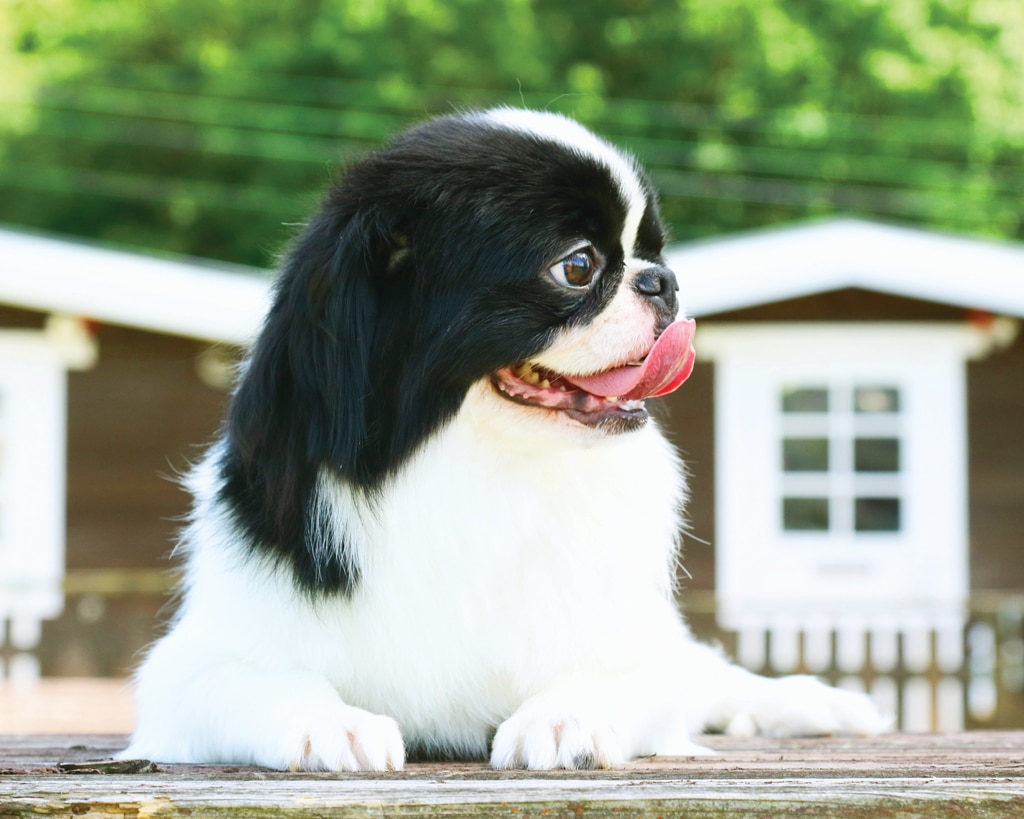
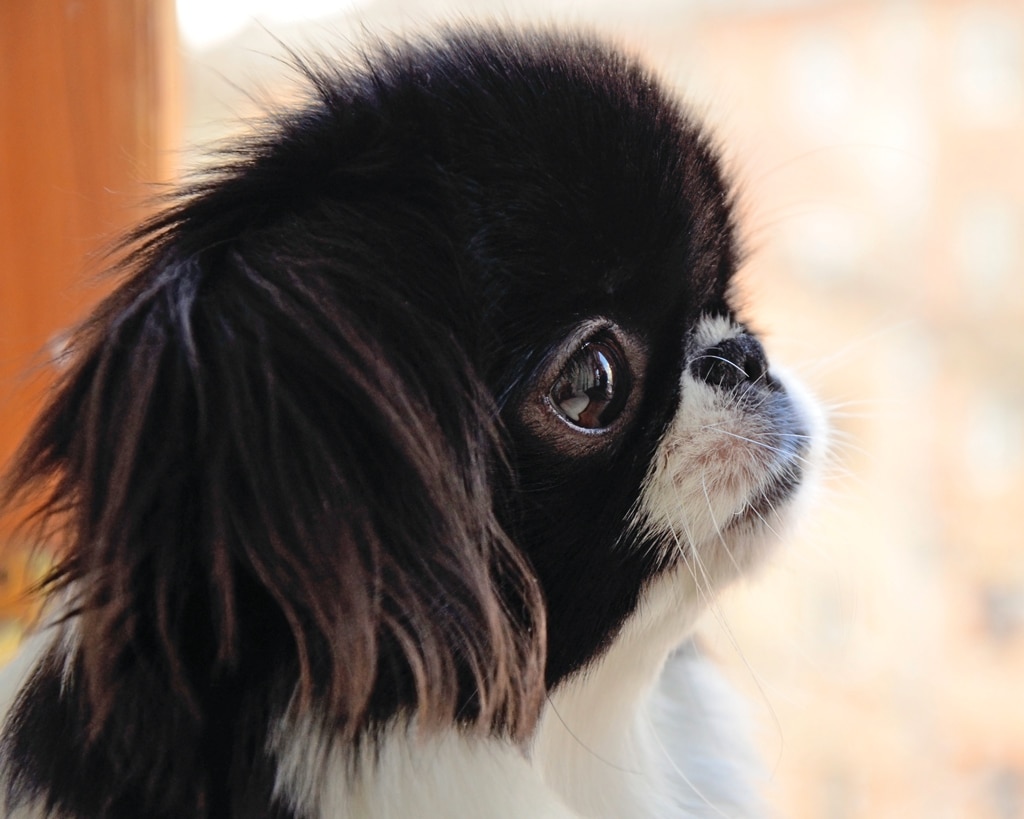
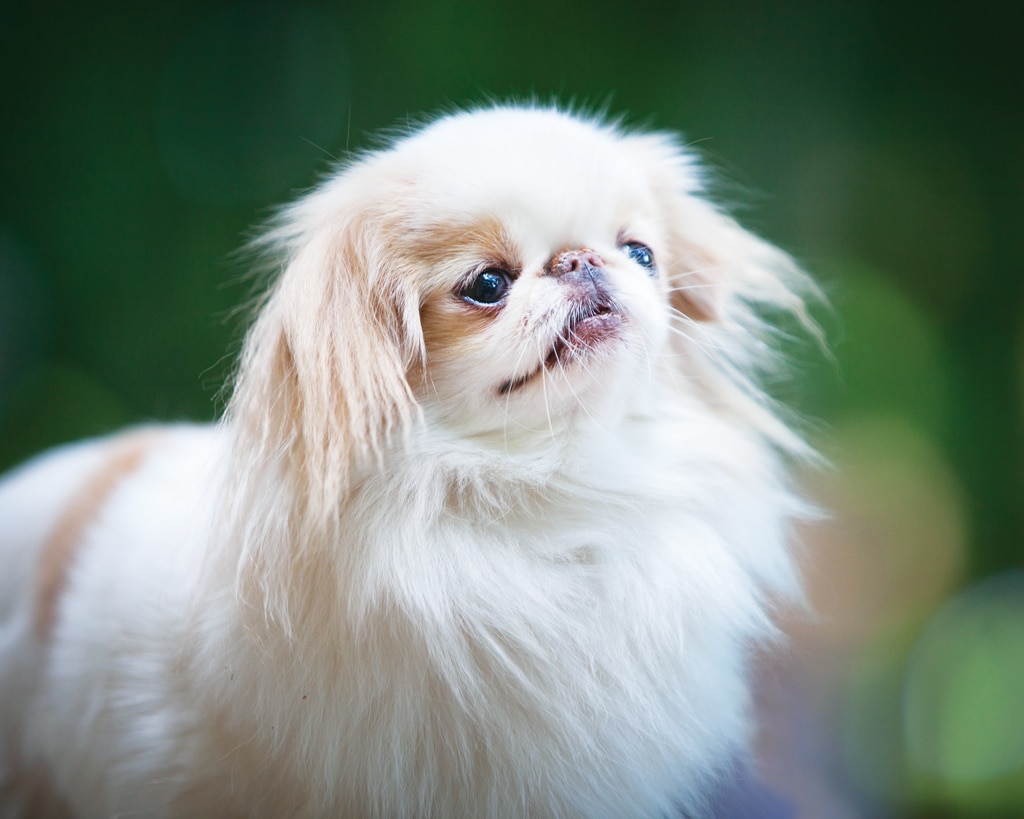
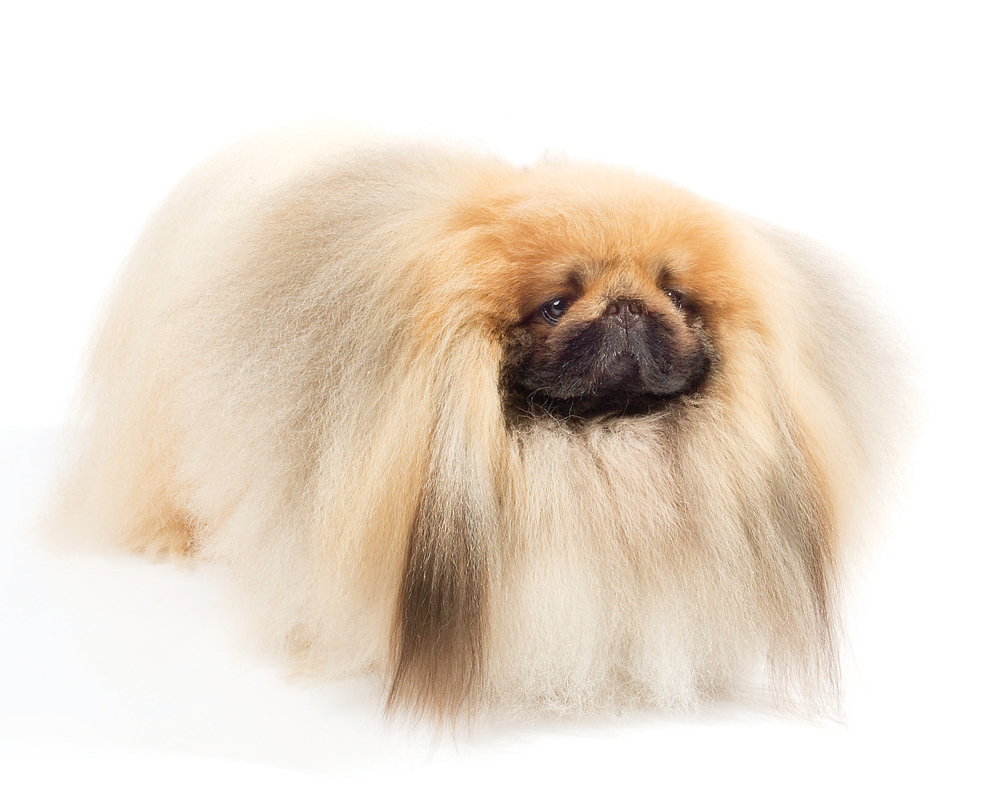
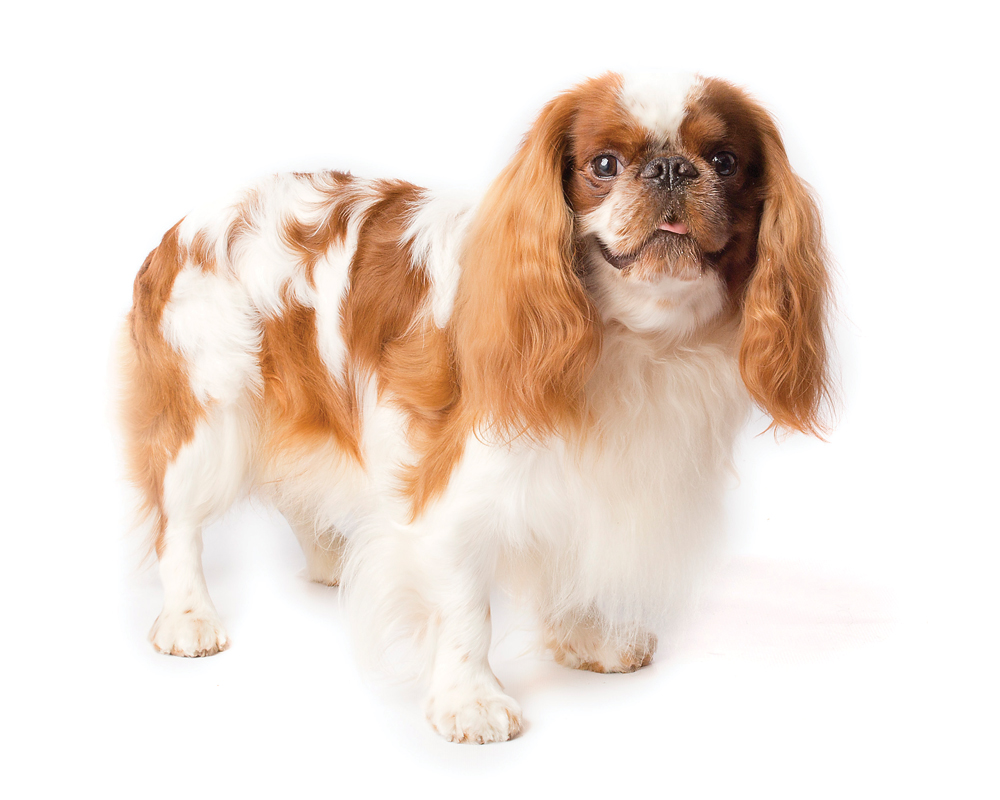
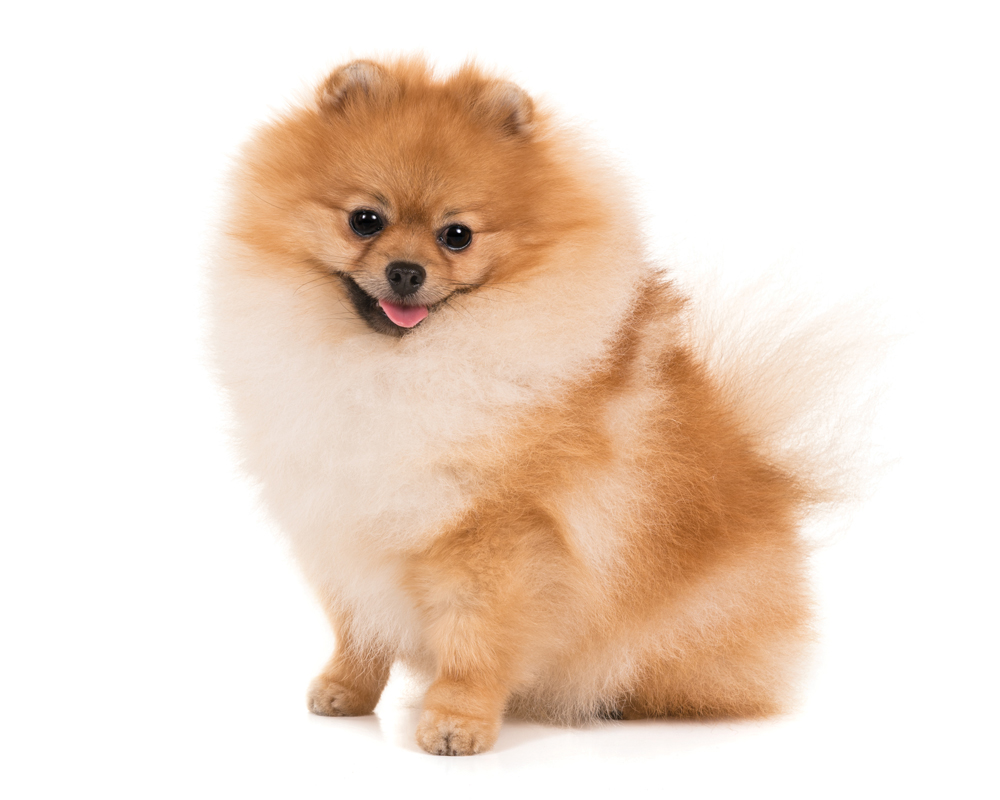

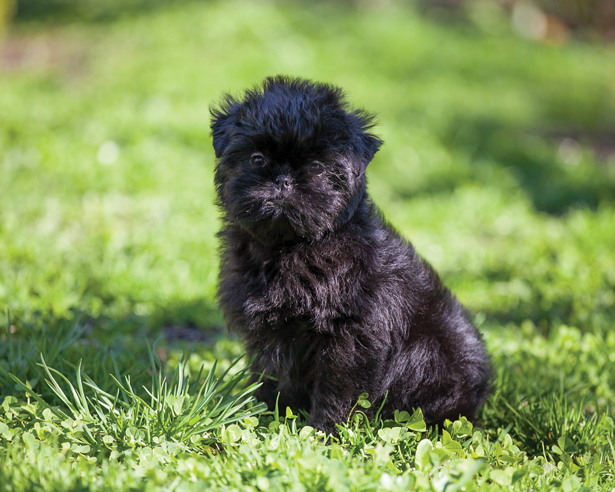
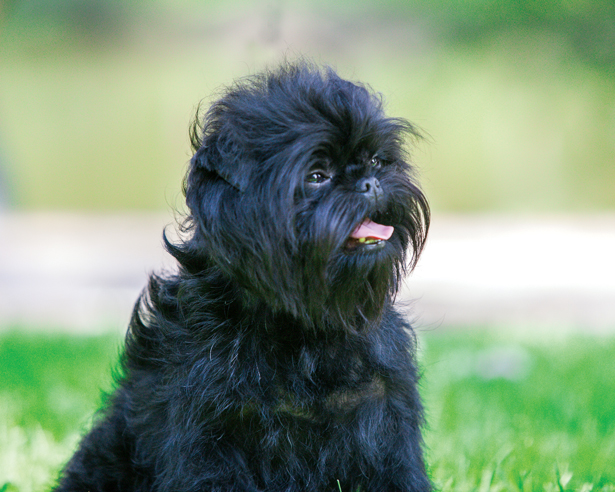
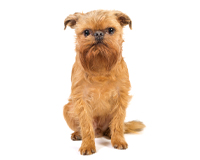

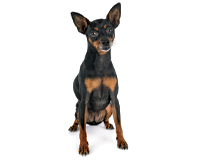

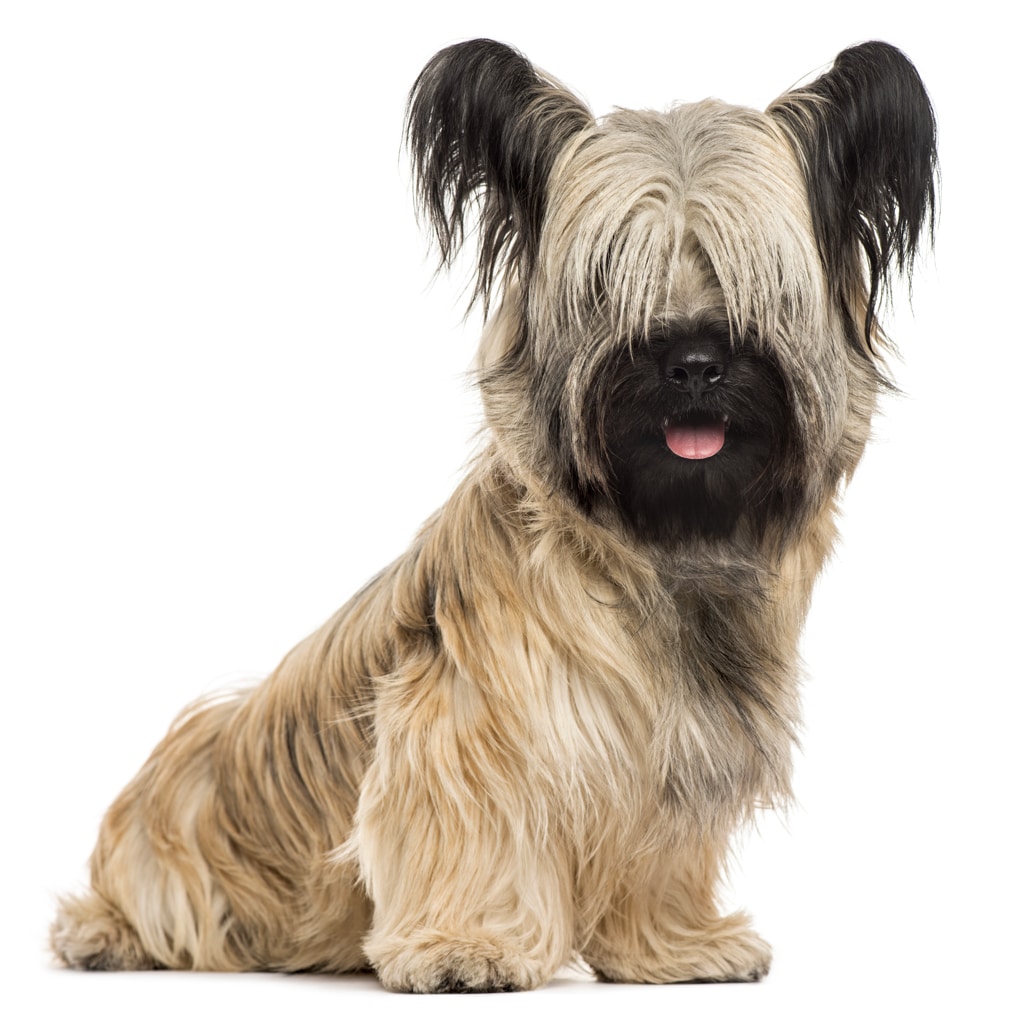
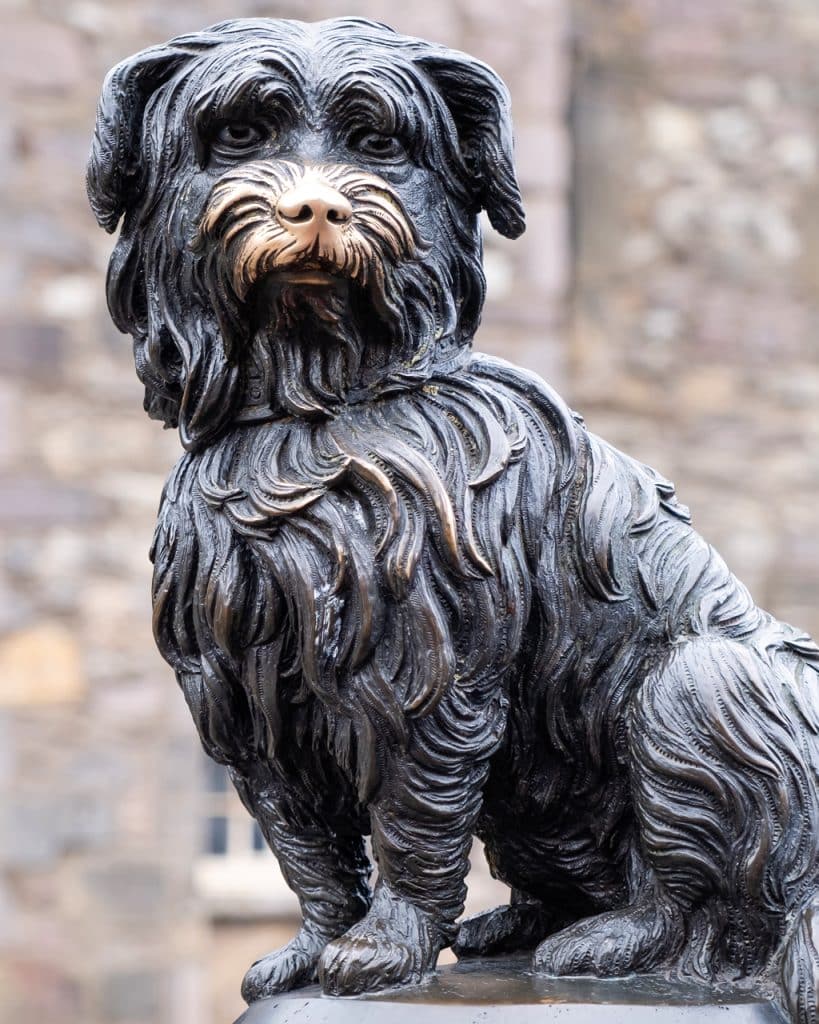
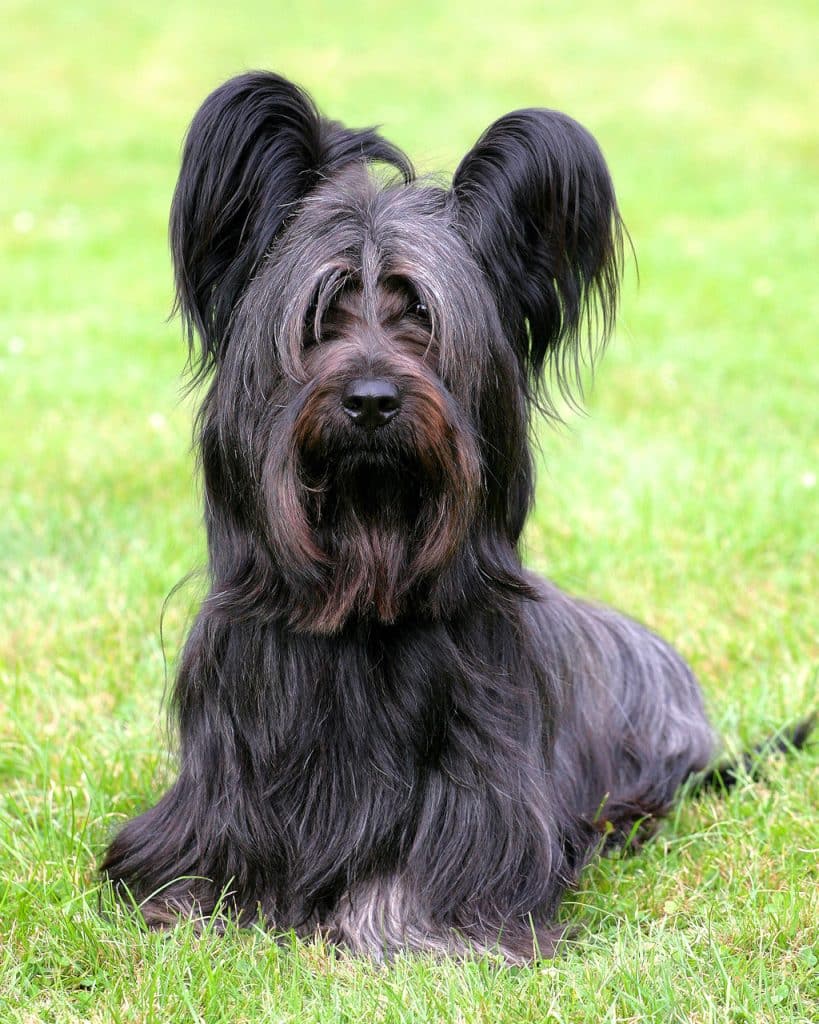
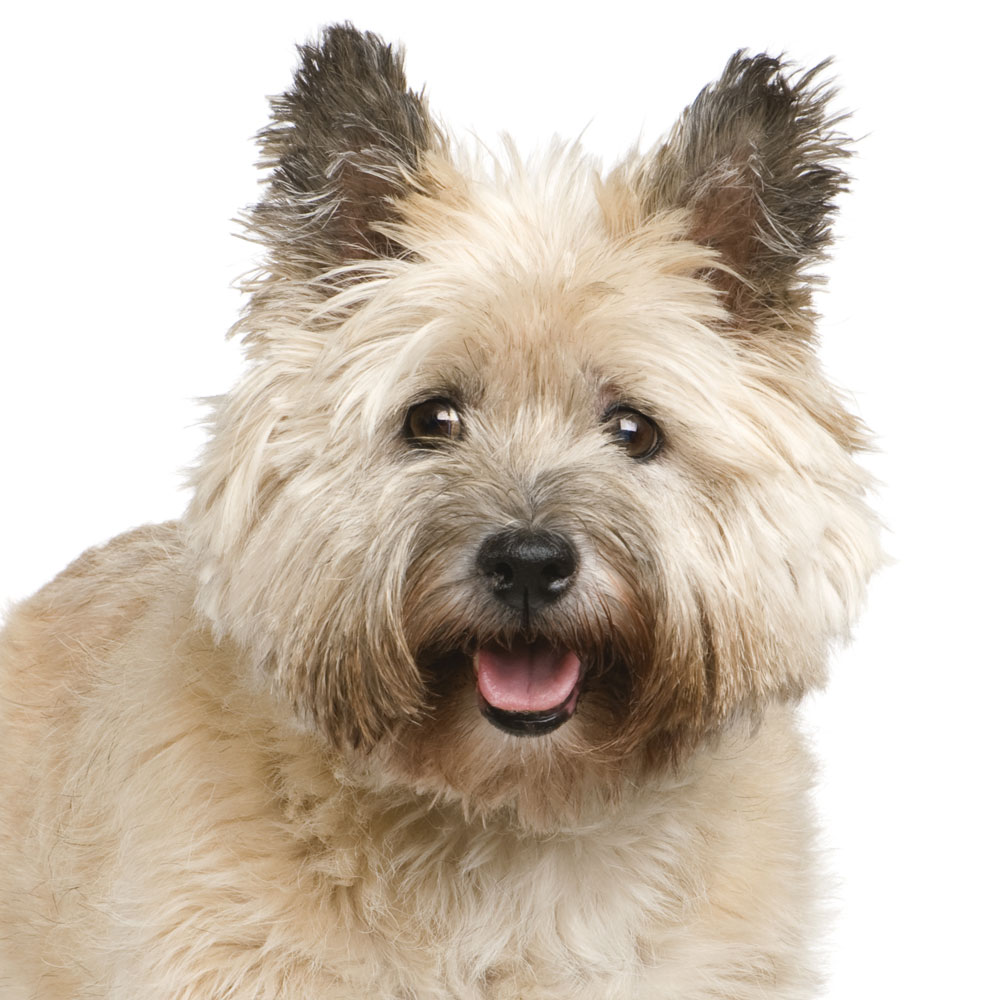
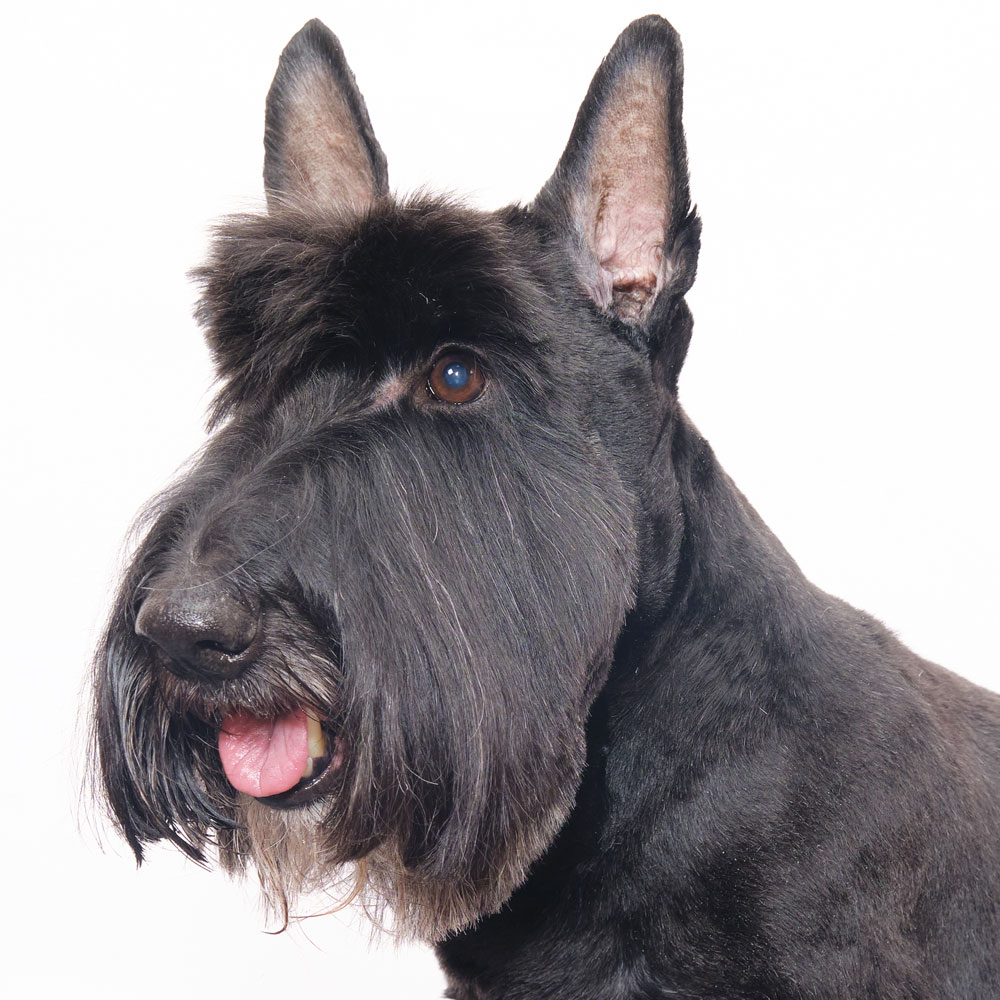
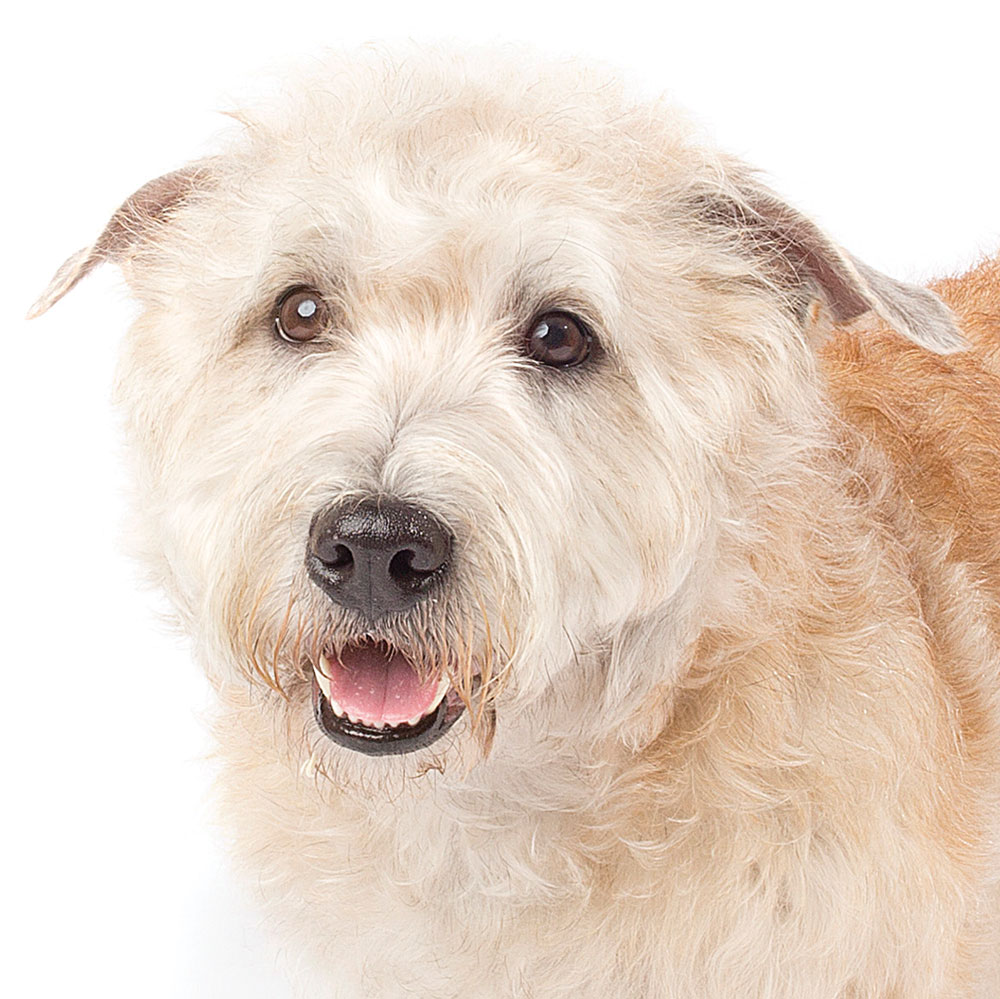

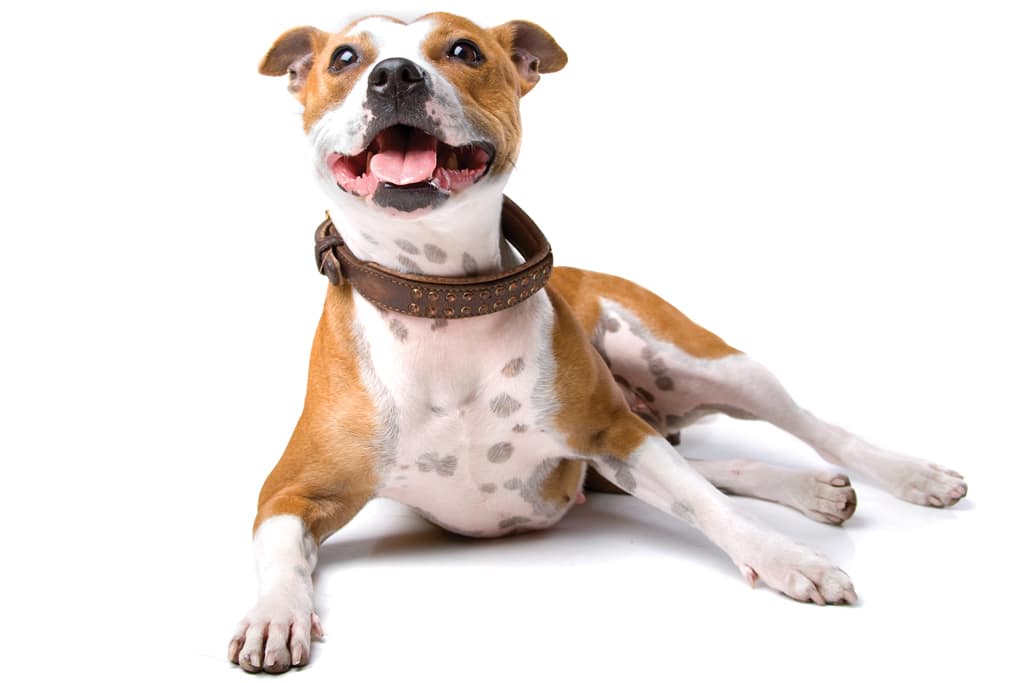
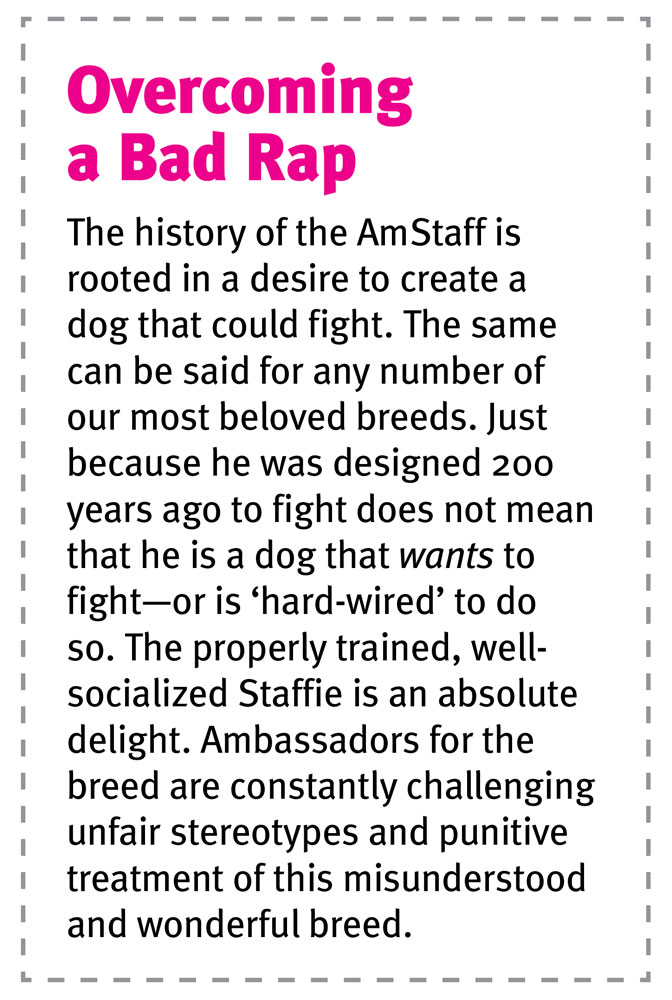 he breed is a combination of Bulldog and terrier: the Bulldog is a consistent genetic aspect to the various ‘bully’ breeds; terriers are the other part of the equation. (England is renowned for its love of terriers in various shapes and sizes, and Bulldogs have been carefully bred in England for centuries). The combo of Bulldogs and various terriers—including the now-extinct White English and Black-and-Tan Terriers—are at the root of the breed we know today as the American Staffordshire Terrier.
he breed is a combination of Bulldog and terrier: the Bulldog is a consistent genetic aspect to the various ‘bully’ breeds; terriers are the other part of the equation. (England is renowned for its love of terriers in various shapes and sizes, and Bulldogs have been carefully bred in England for centuries). The combo of Bulldogs and various terriers—including the now-extinct White English and Black-and-Tan Terriers—are at the root of the breed we know today as the American Staffordshire Terrier.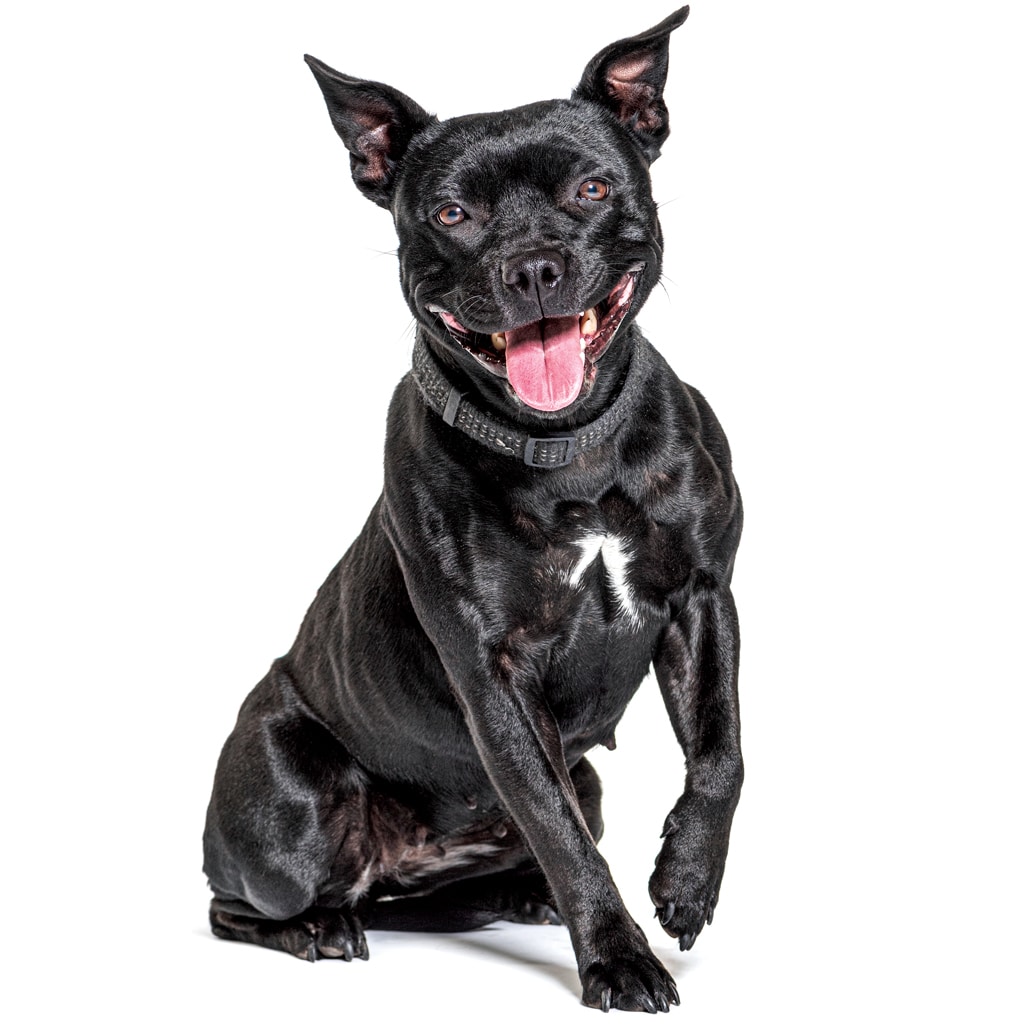
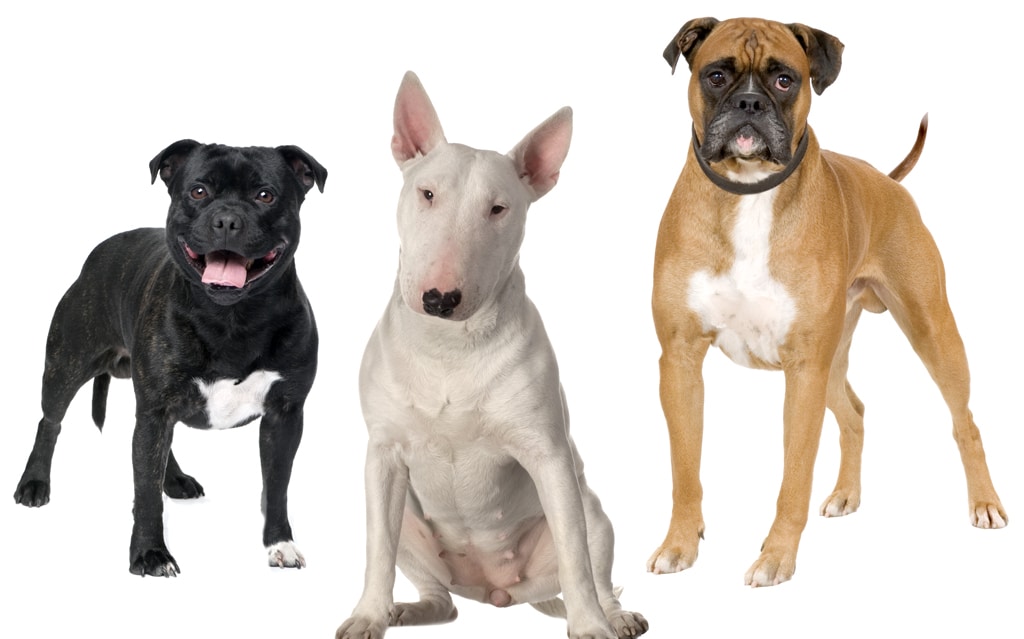

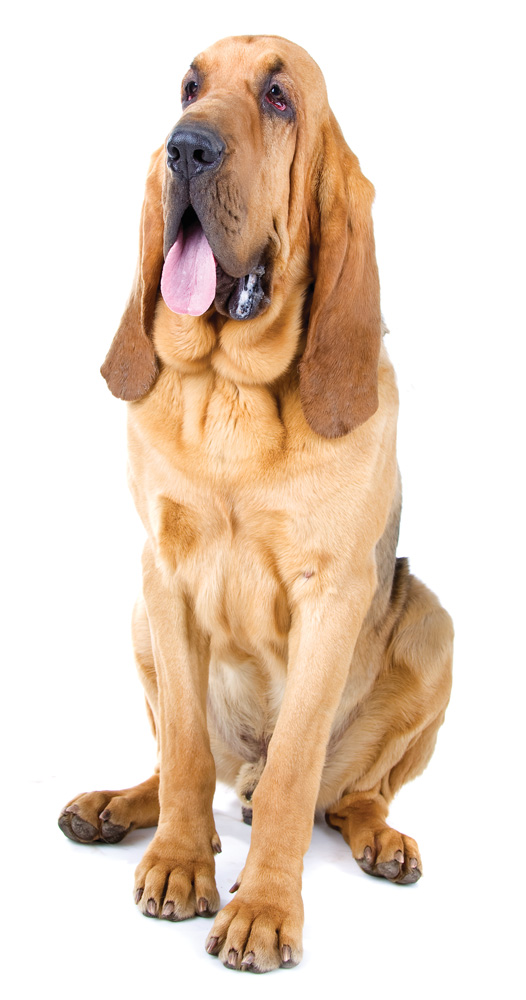 There’s no mistaking the Bloodhound. That trademark long face, those soul-piercing eyes, and the endless wrinkles and folds of his skin! This is a truly substantial dog who strikes a unique and dignified pose. He’s the most renowned
There’s no mistaking the Bloodhound. That trademark long face, those soul-piercing eyes, and the endless wrinkles and folds of his skin! This is a truly substantial dog who strikes a unique and dignified pose. He’s the most renowned 
